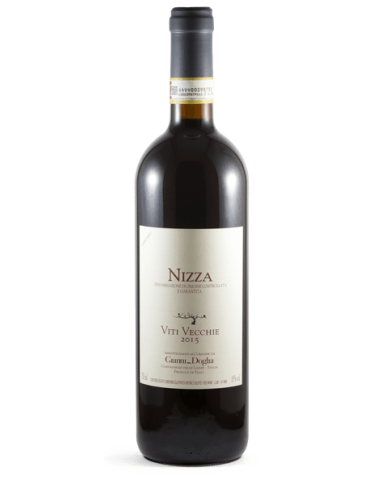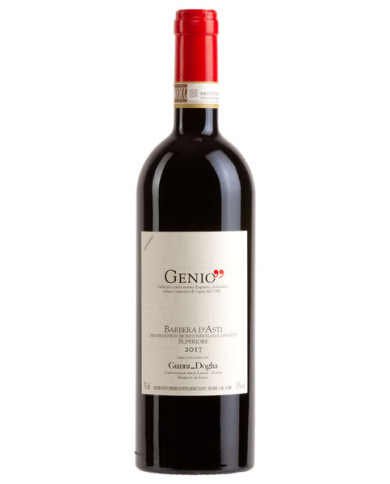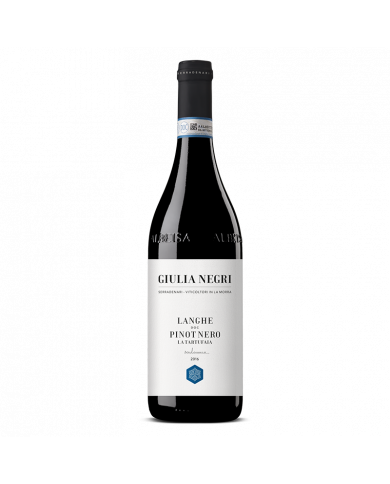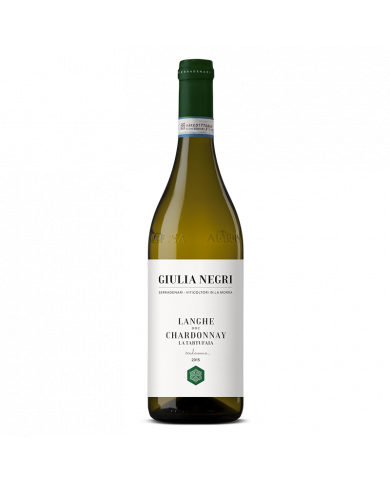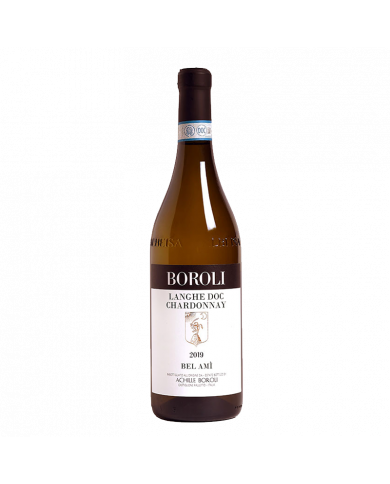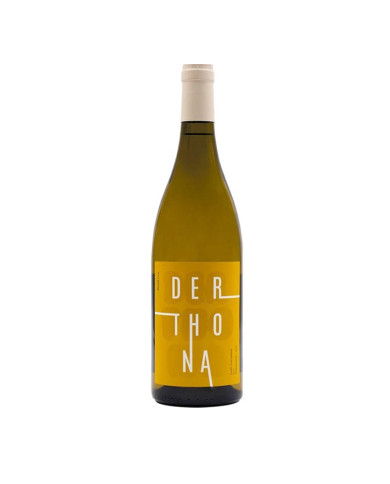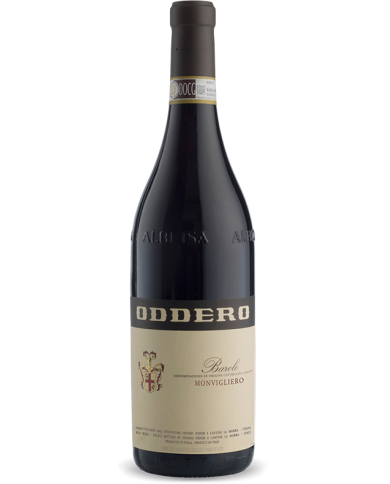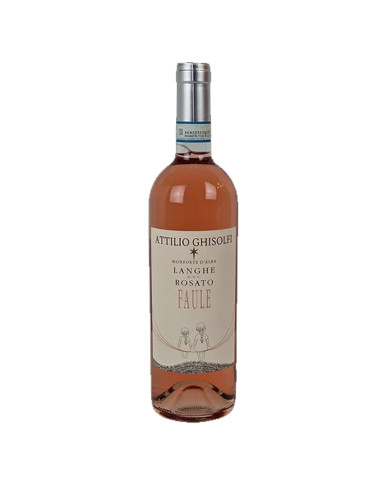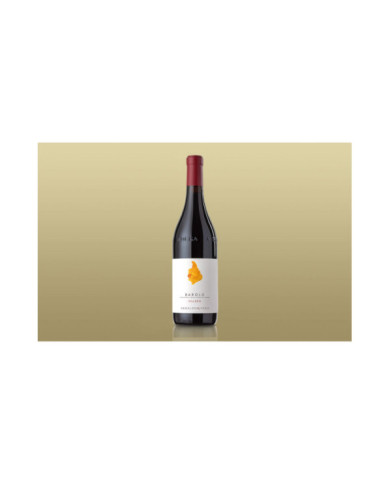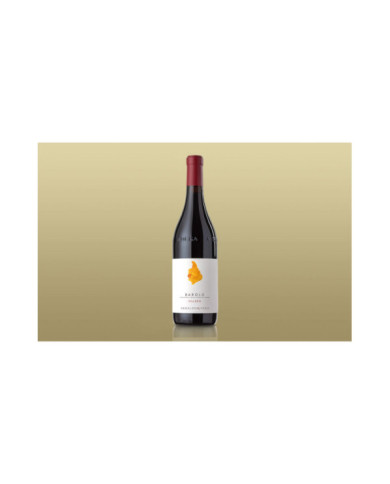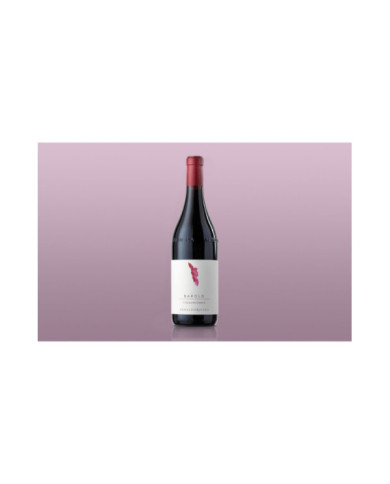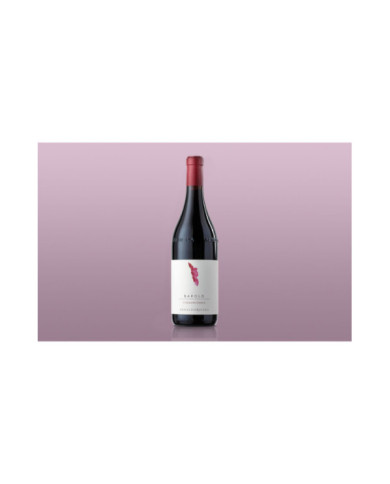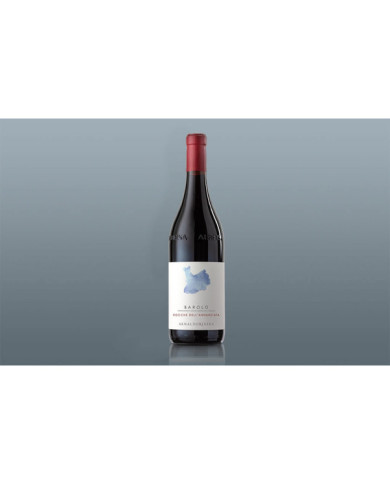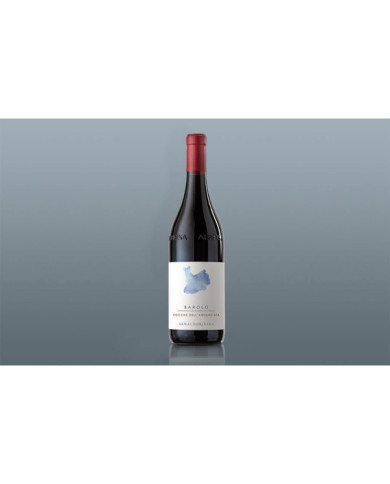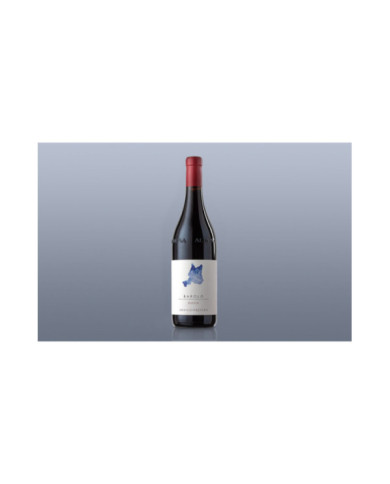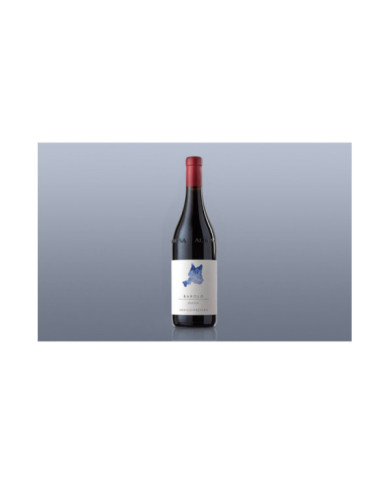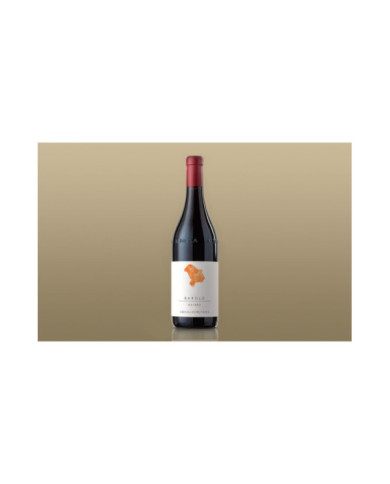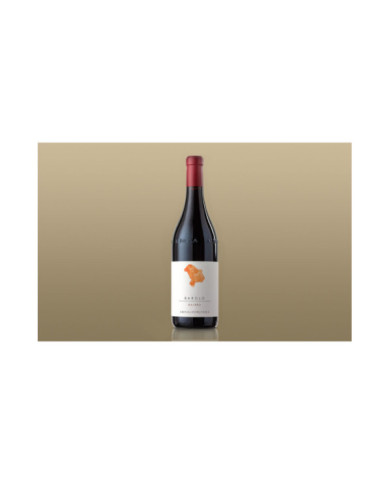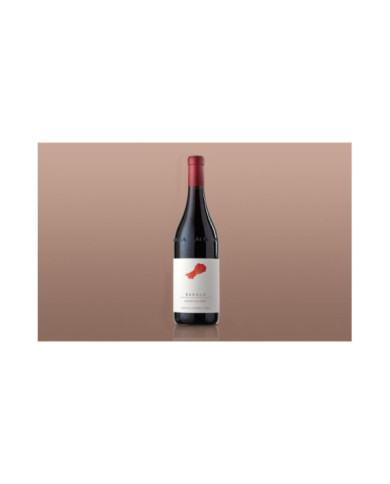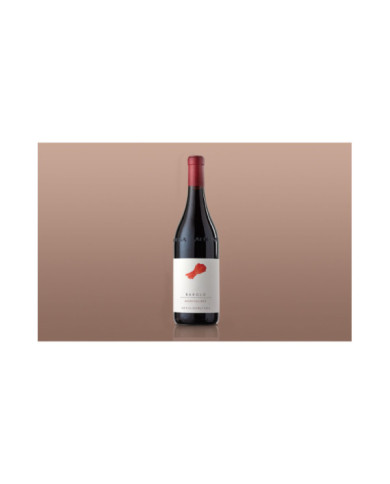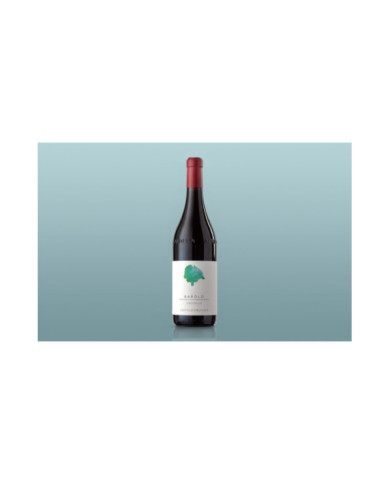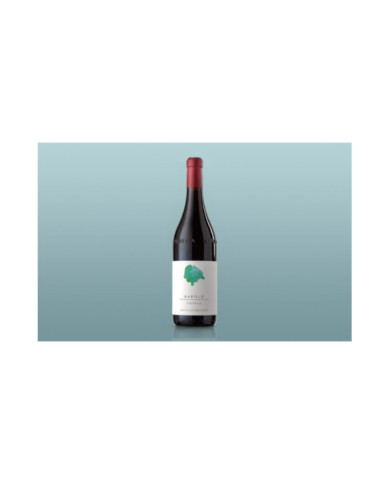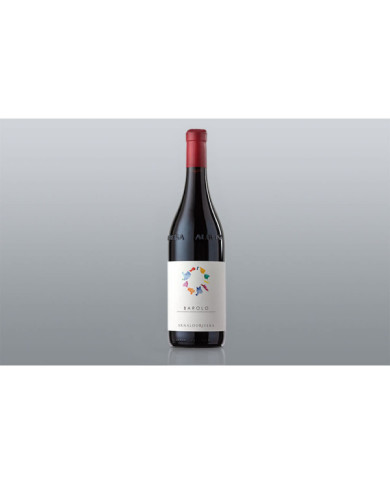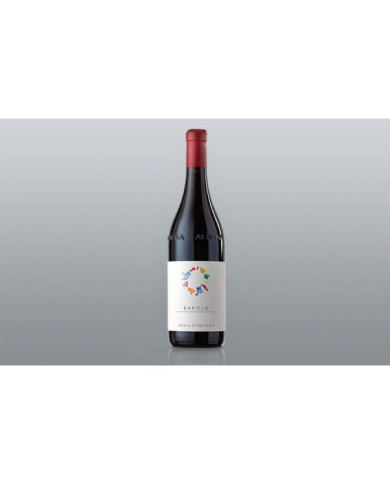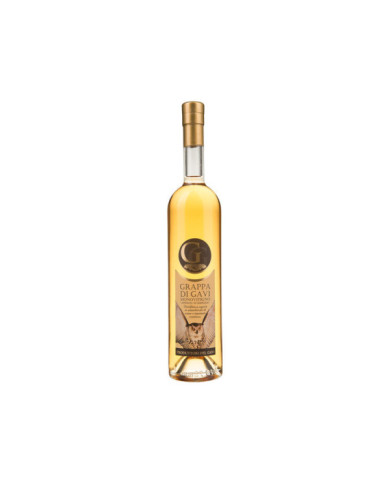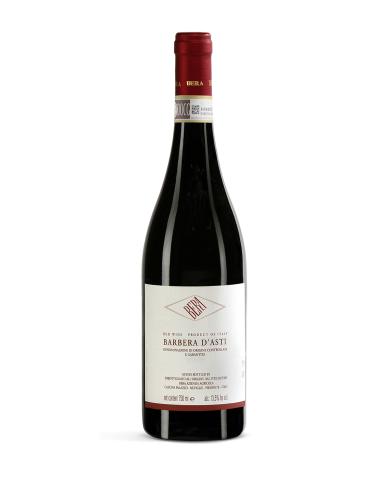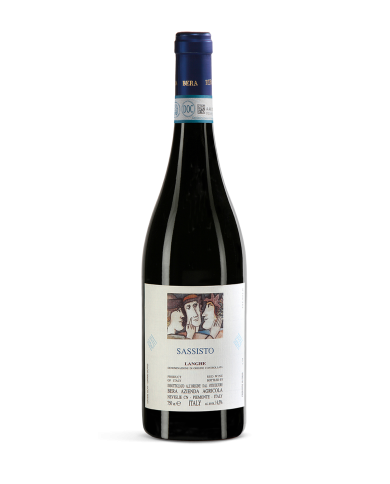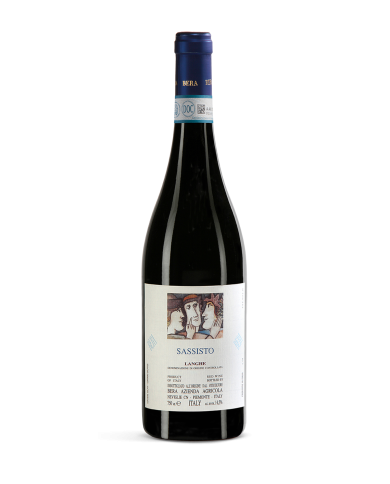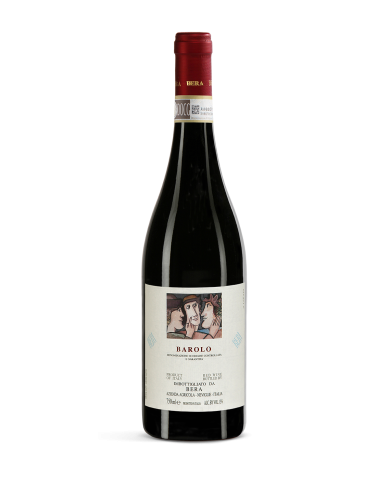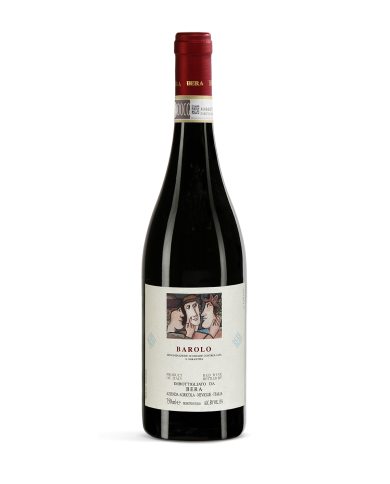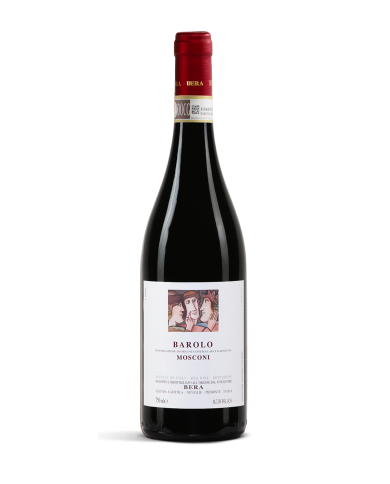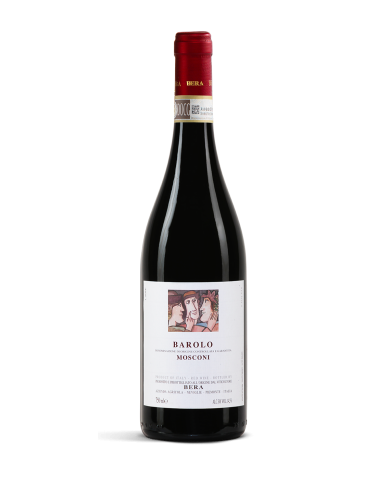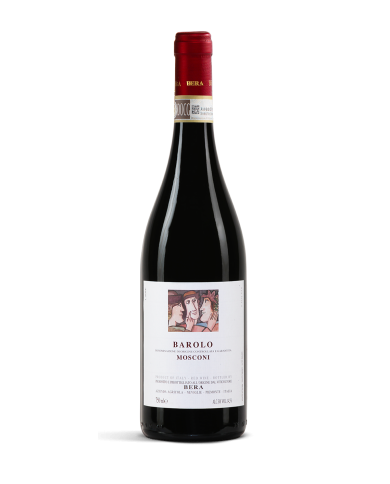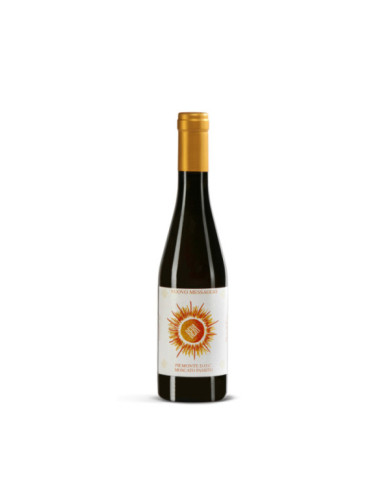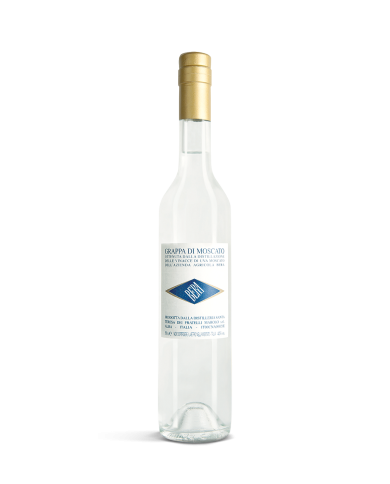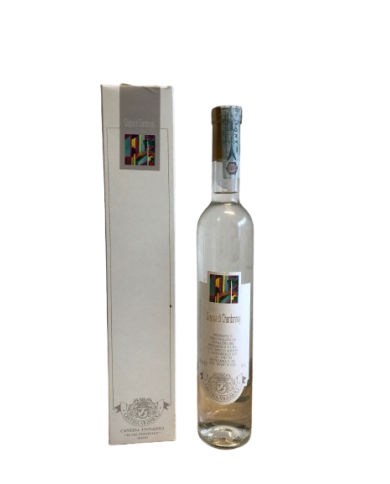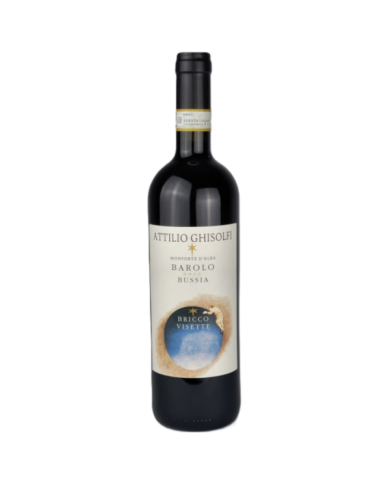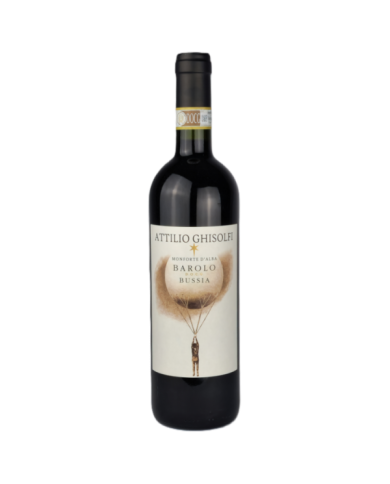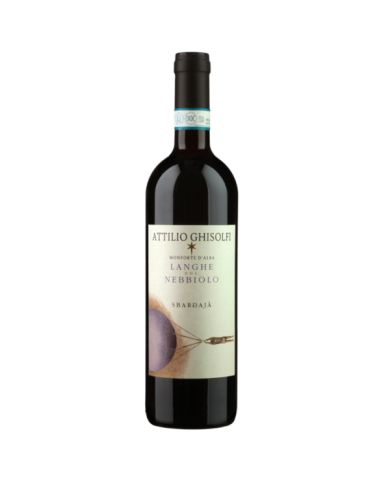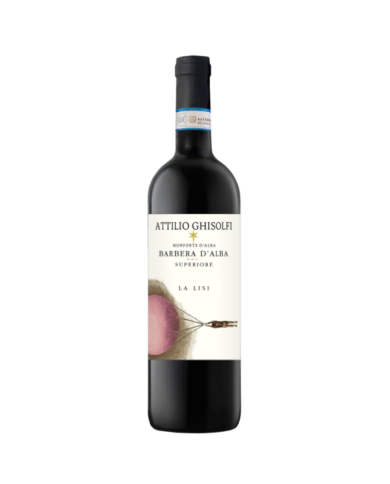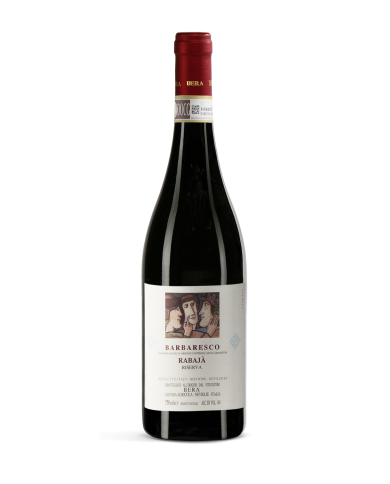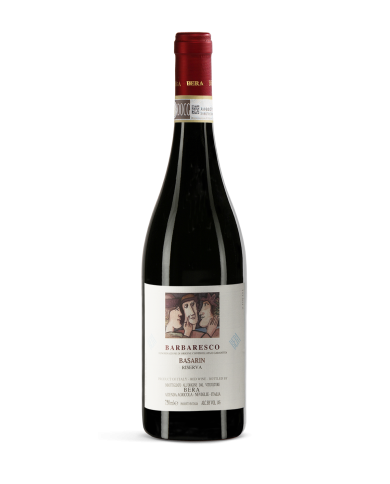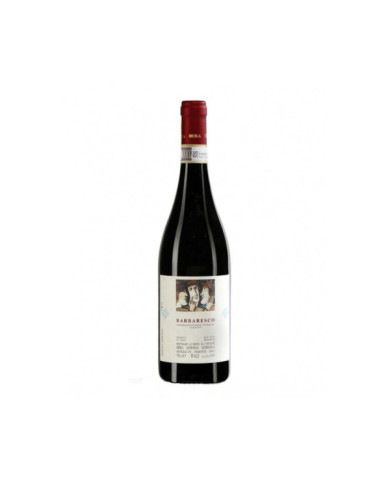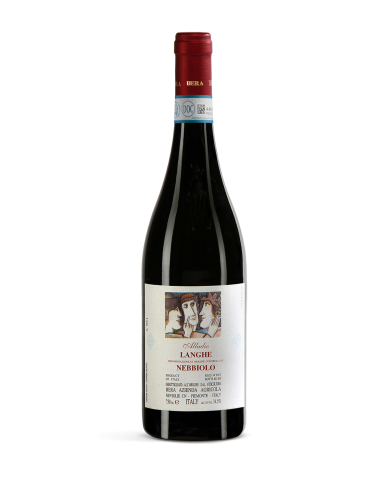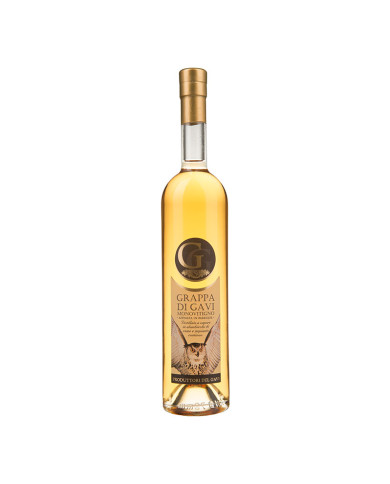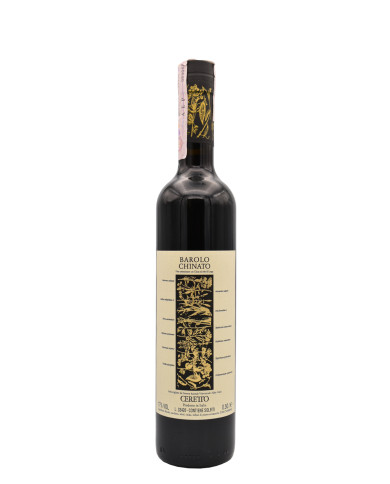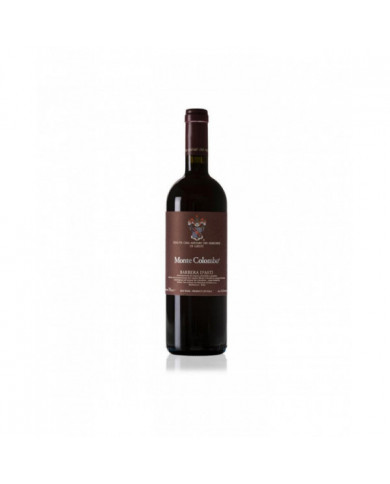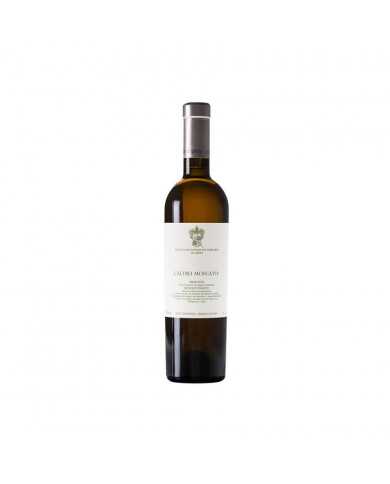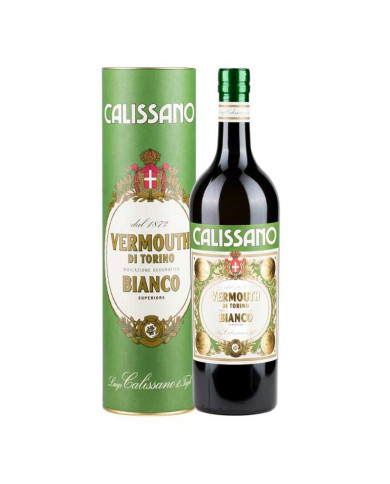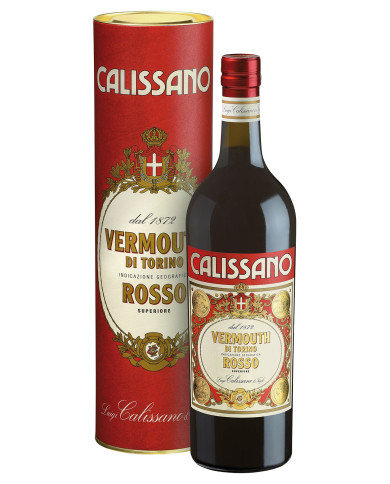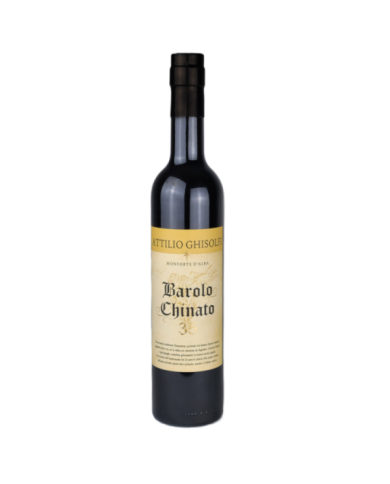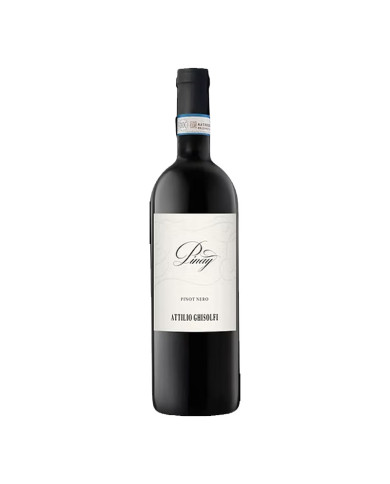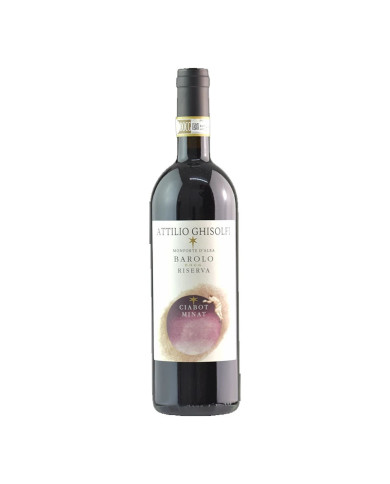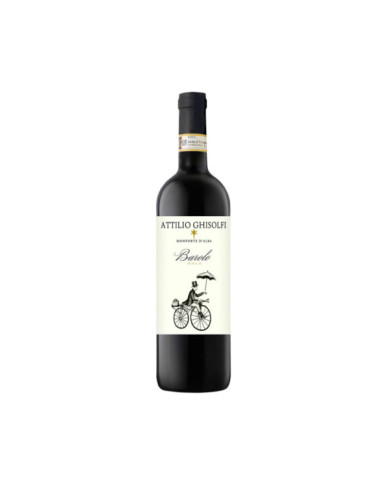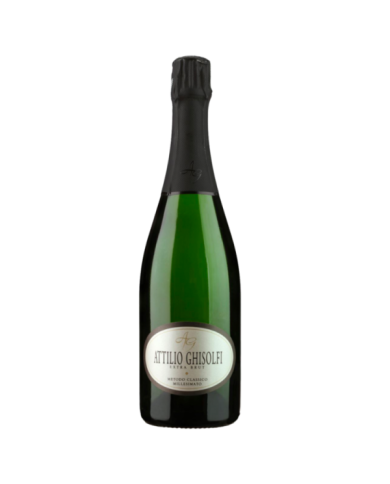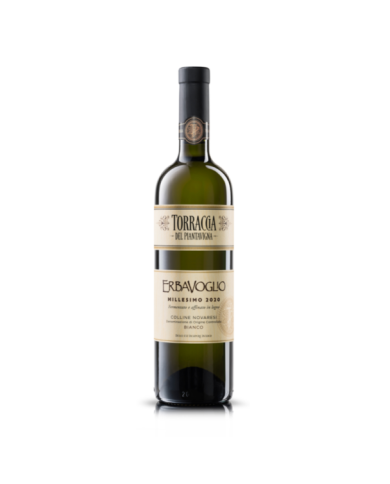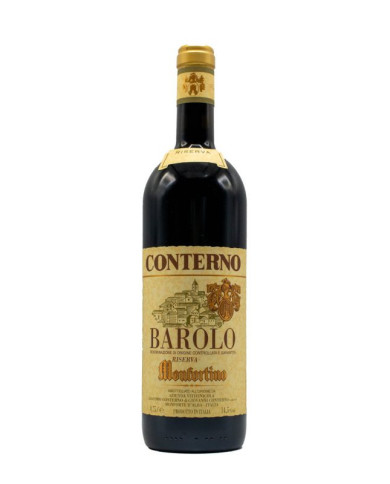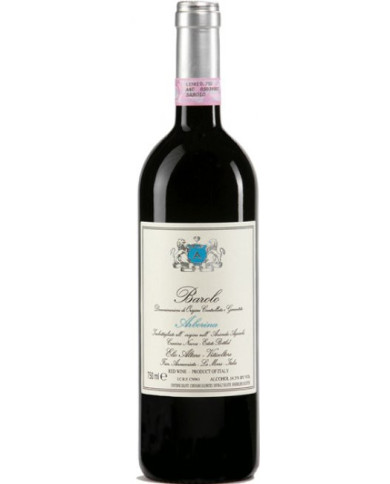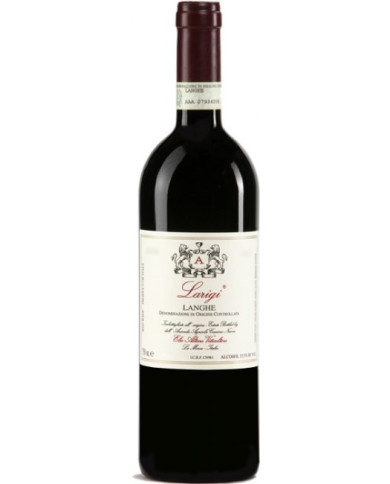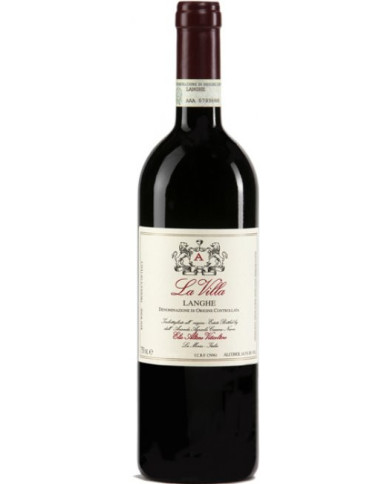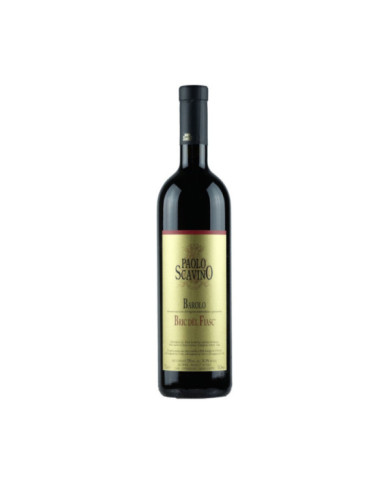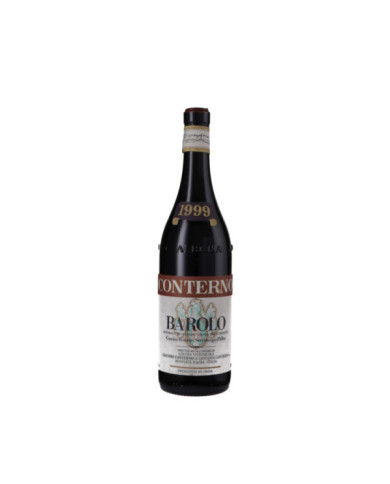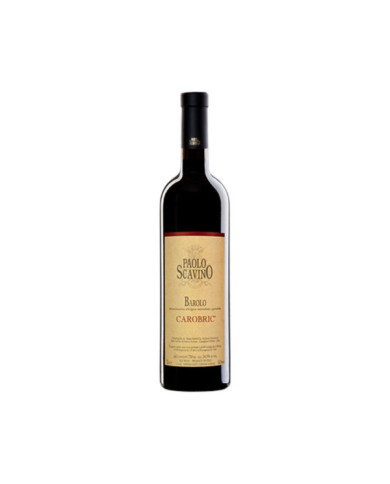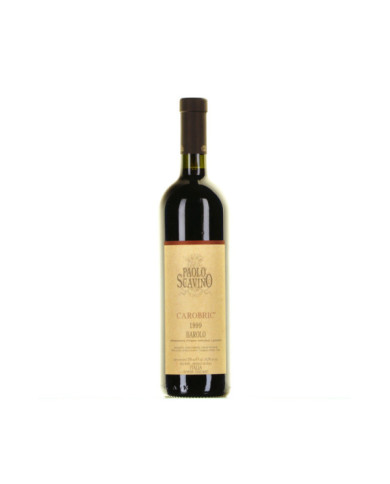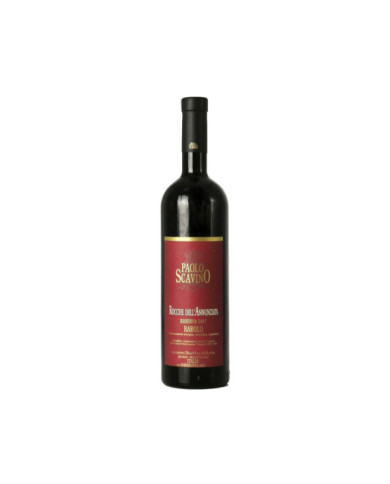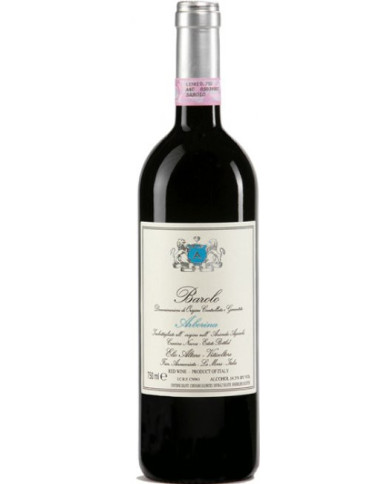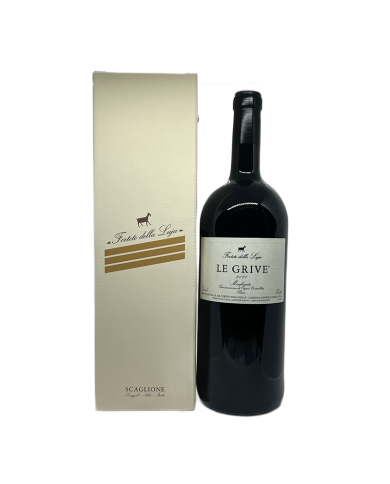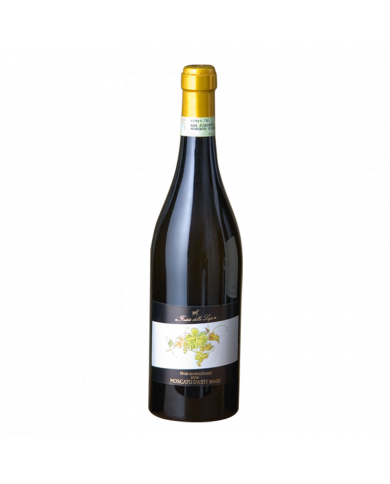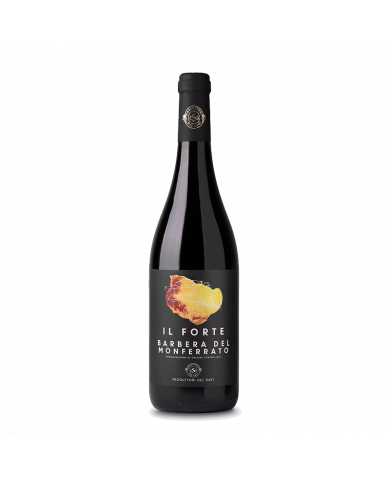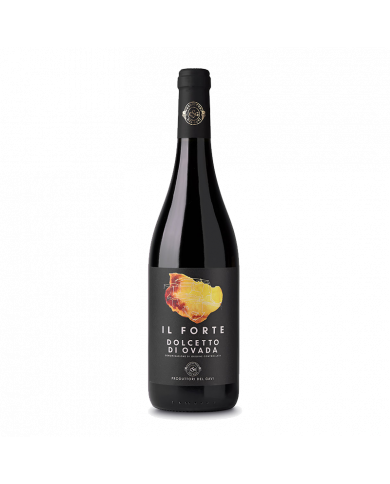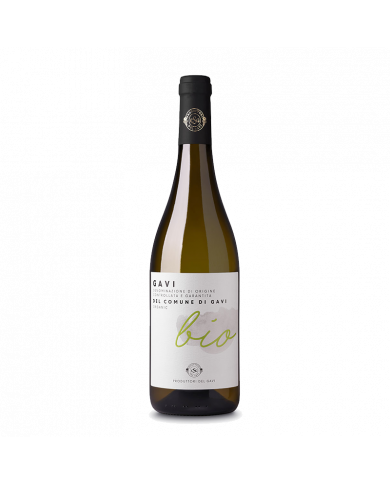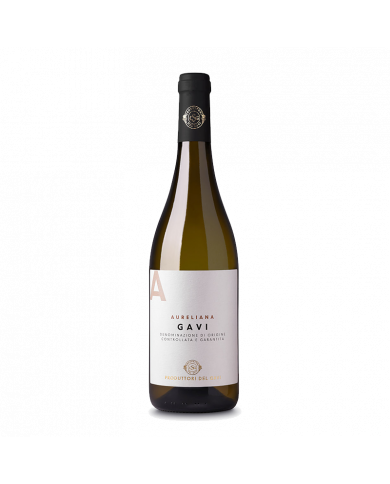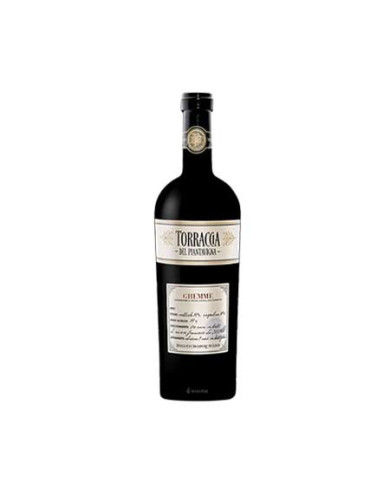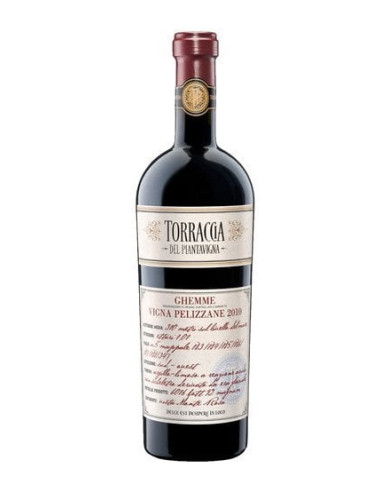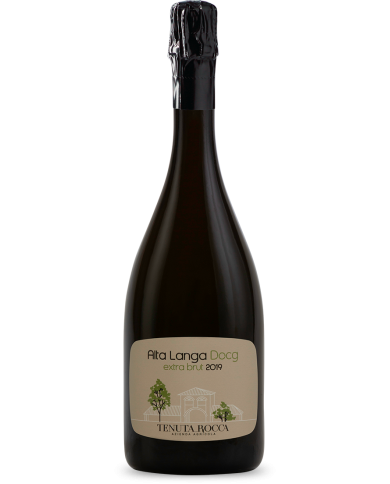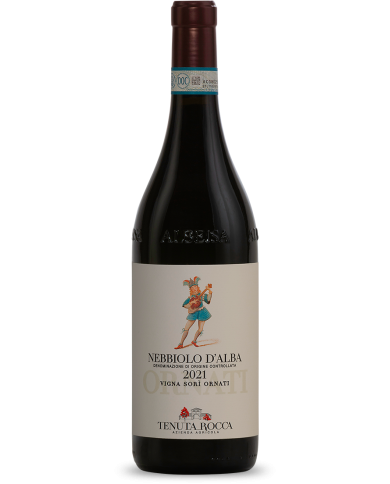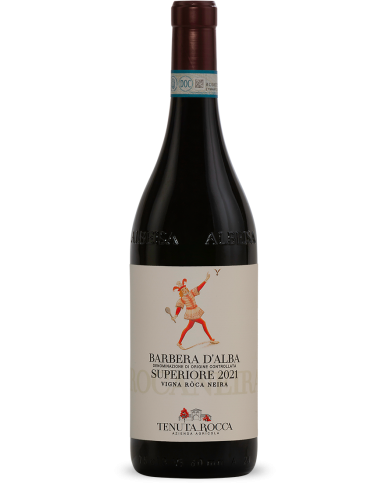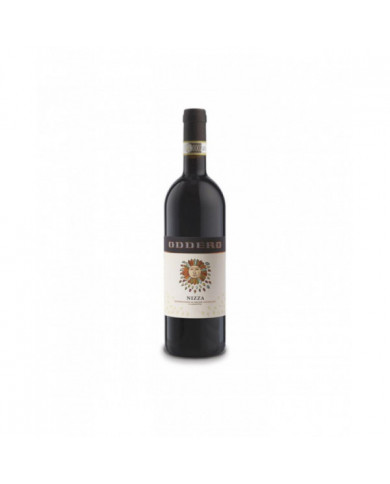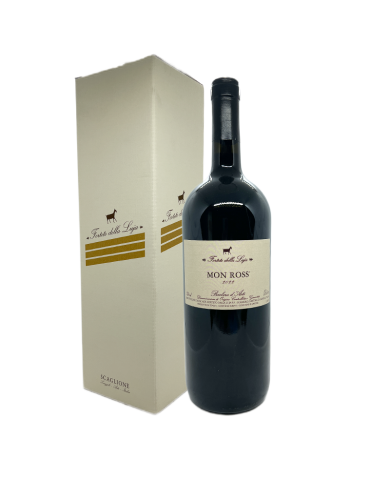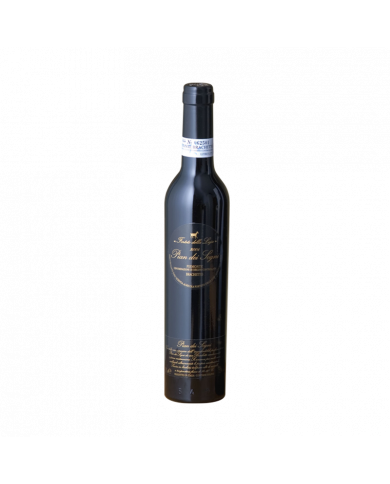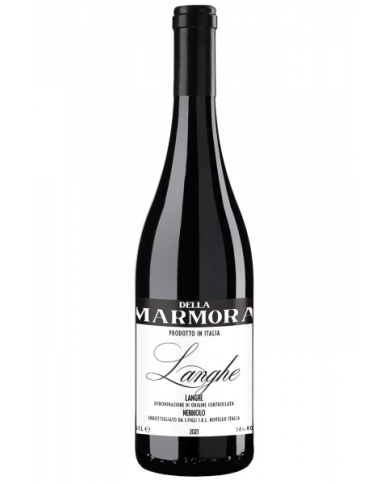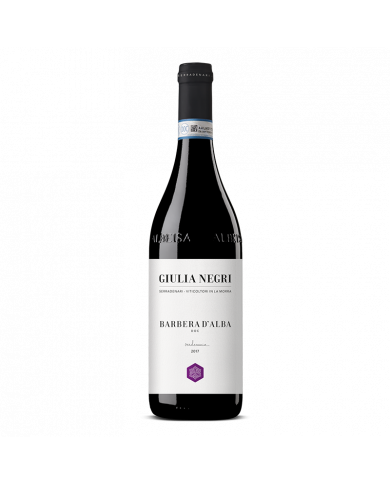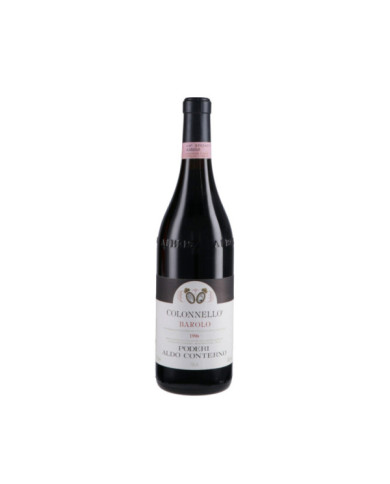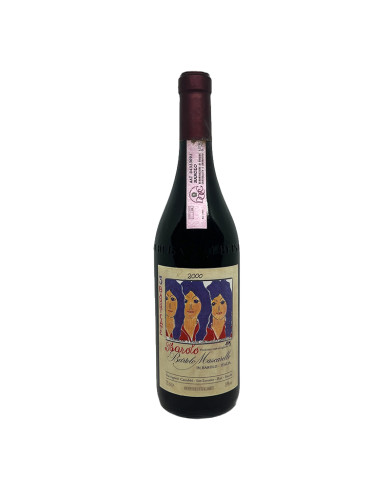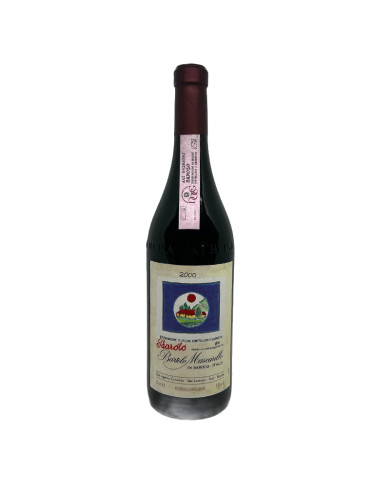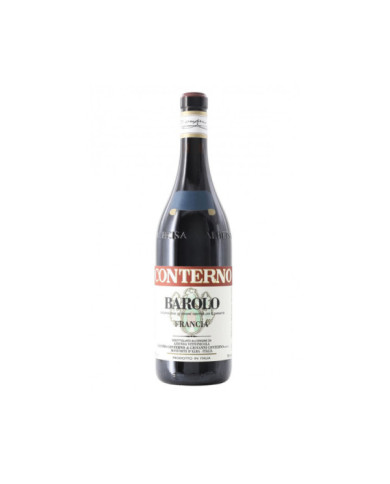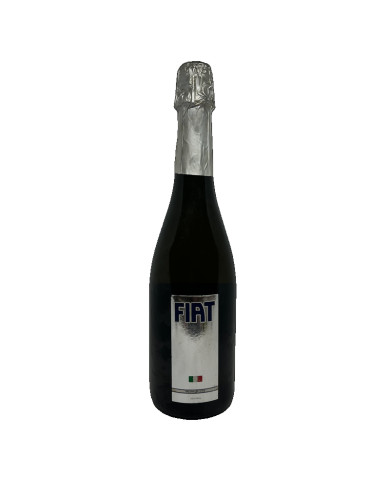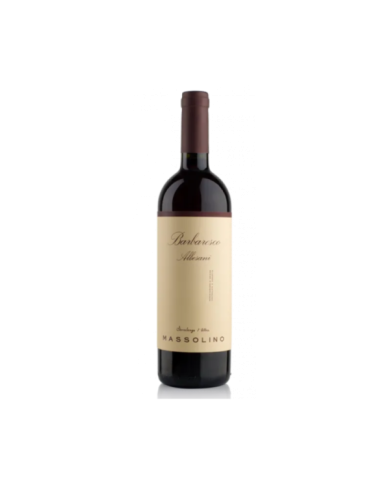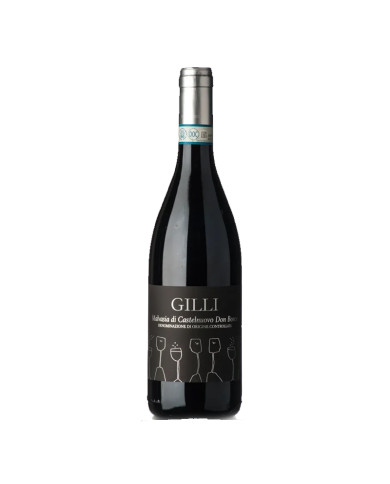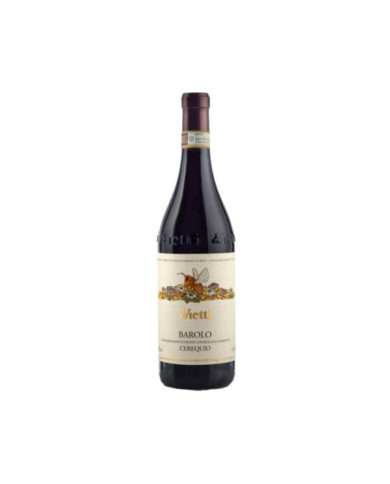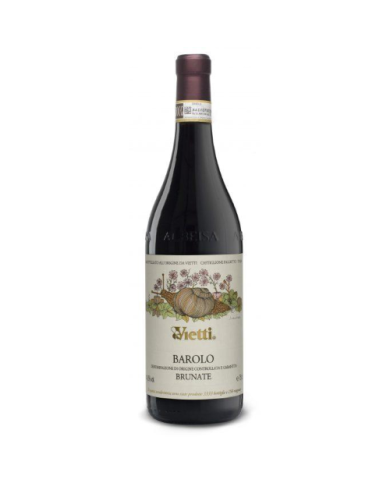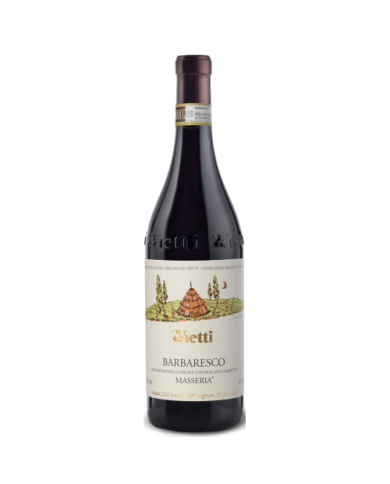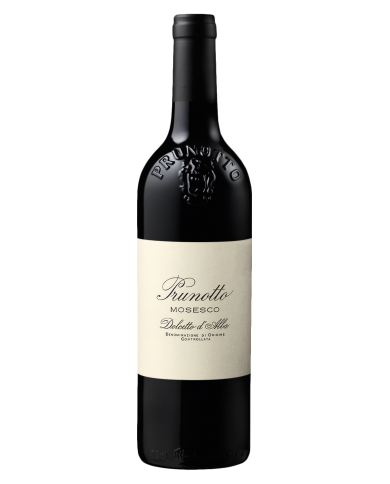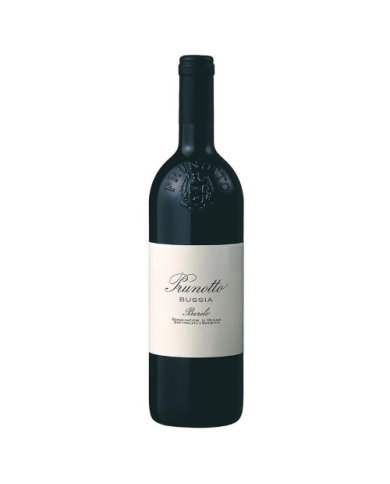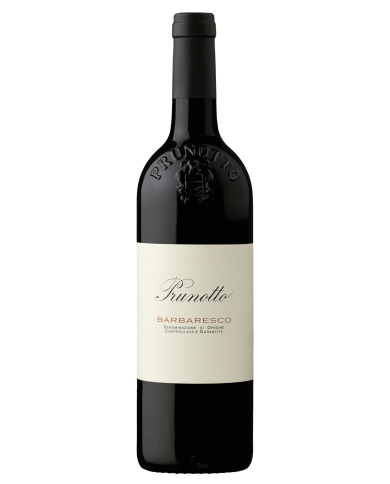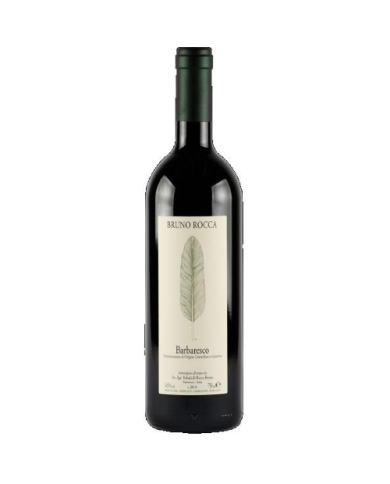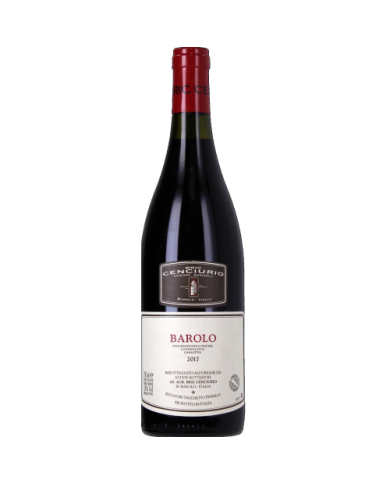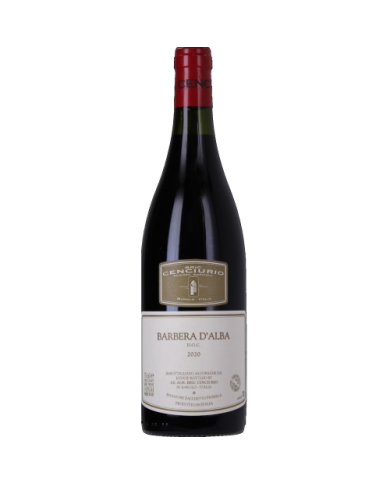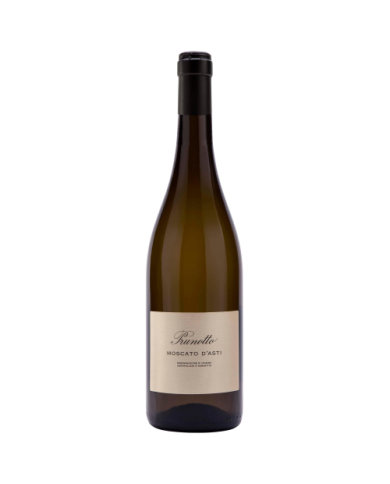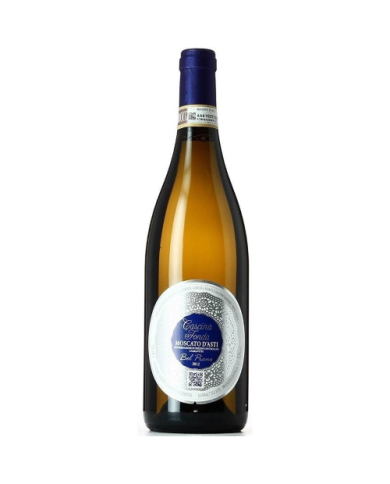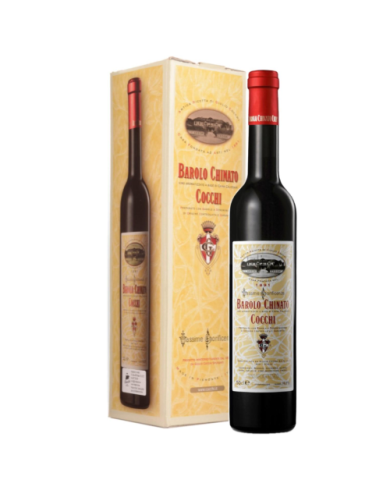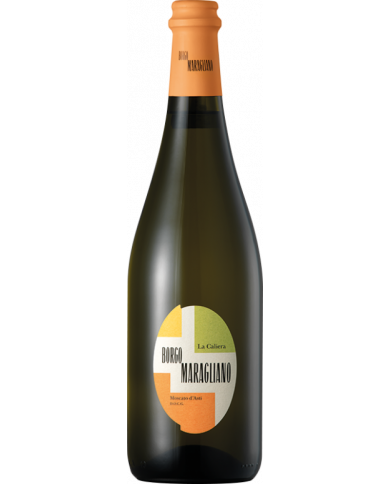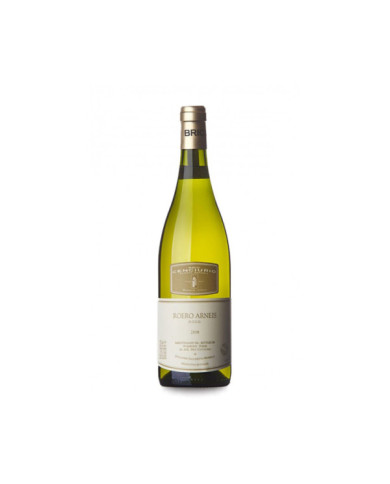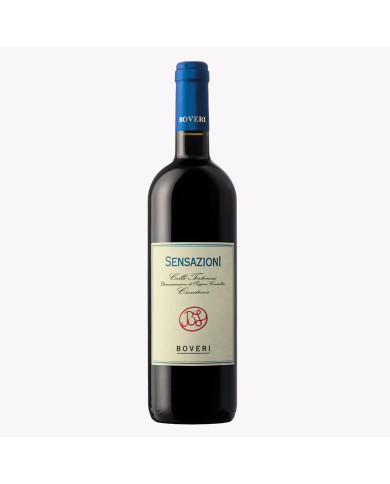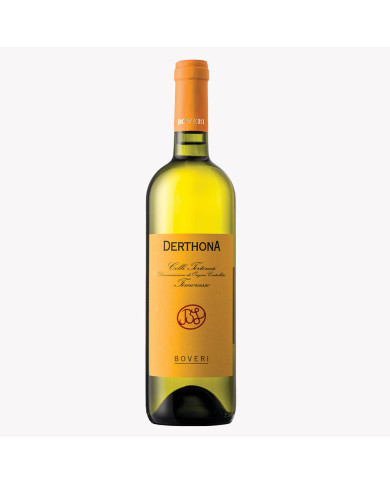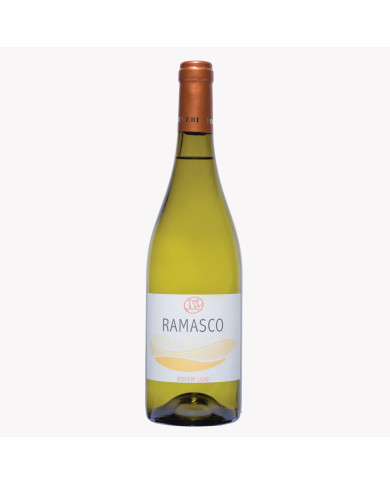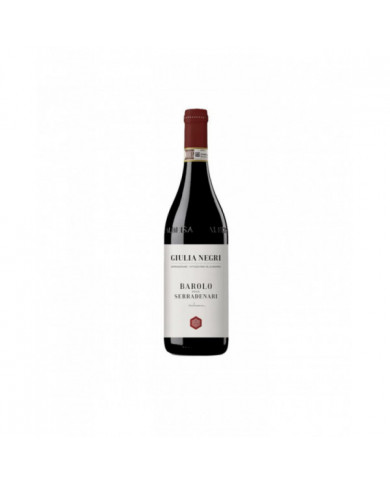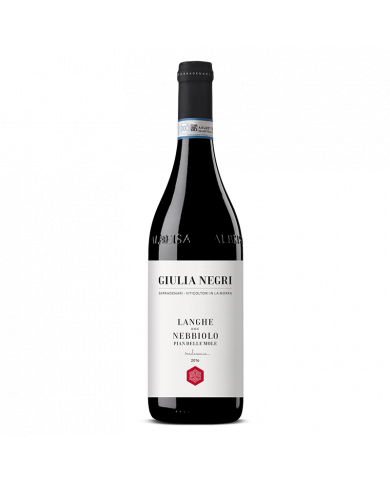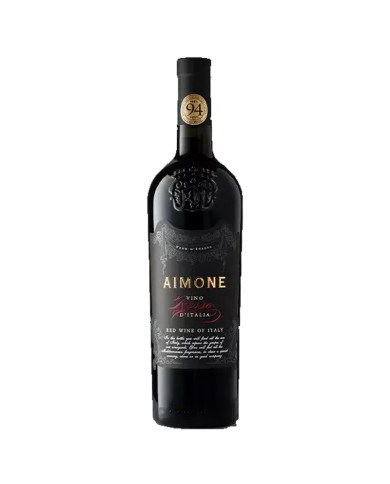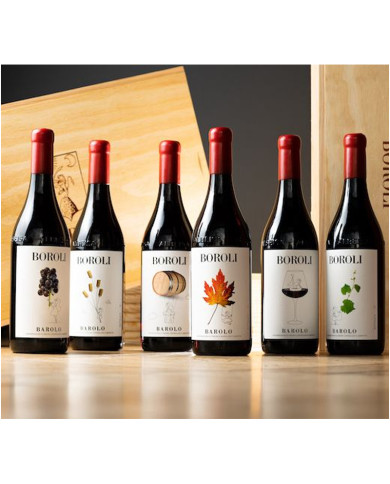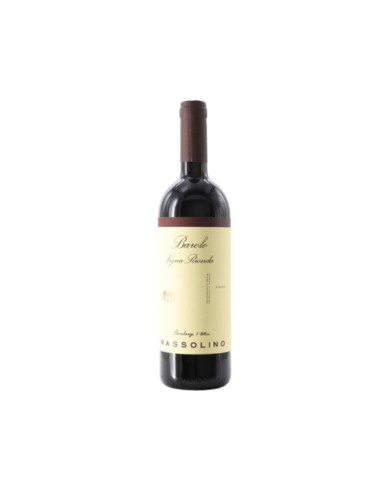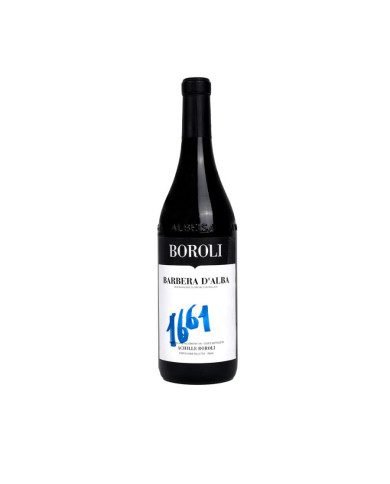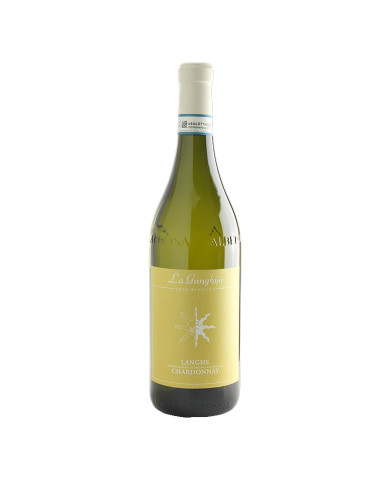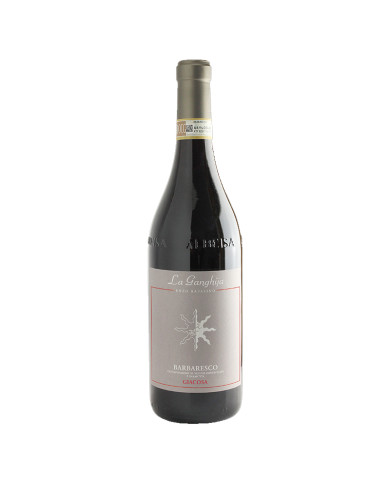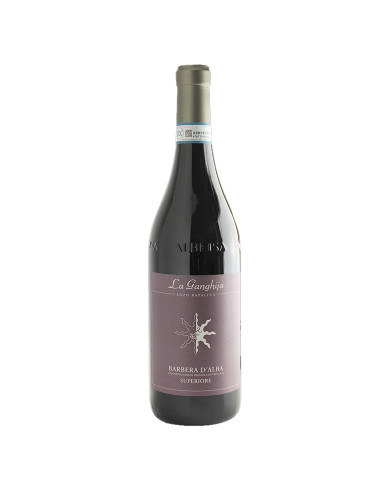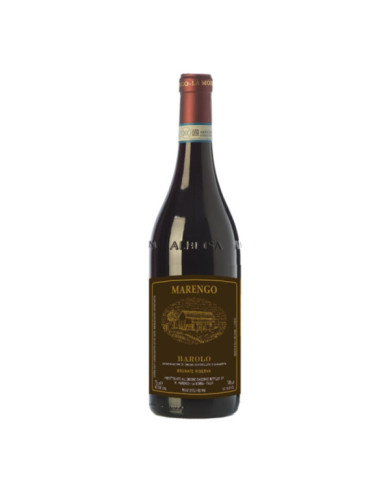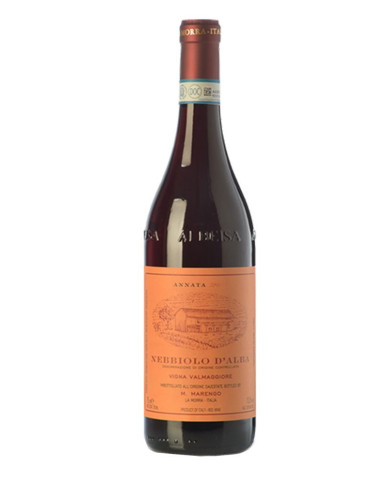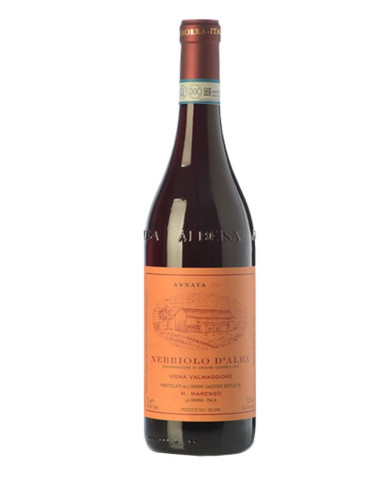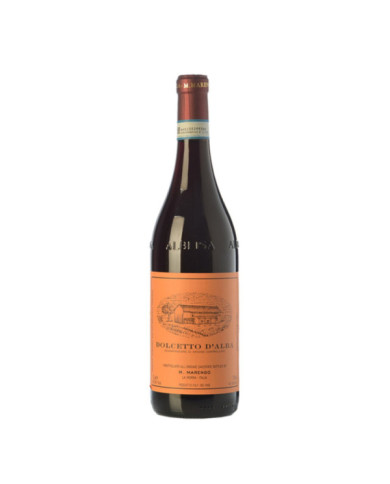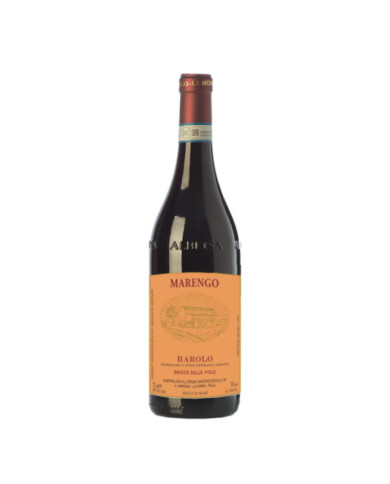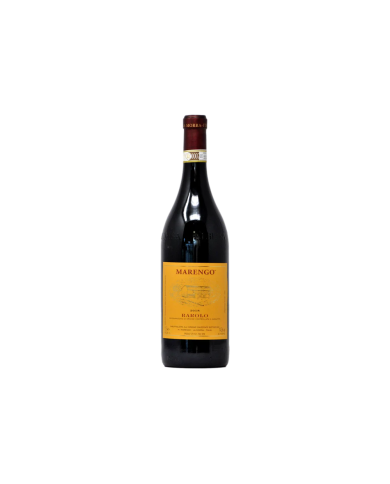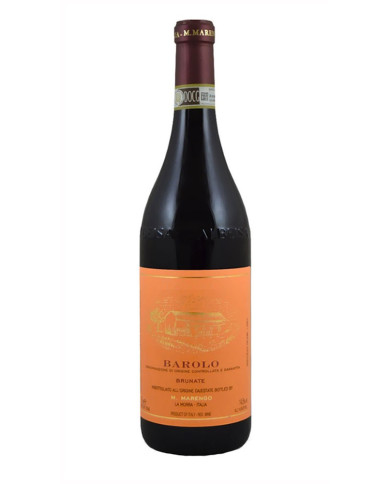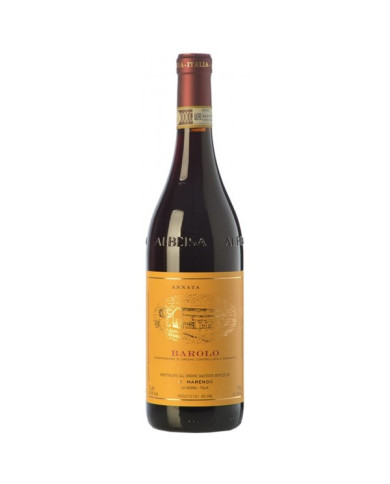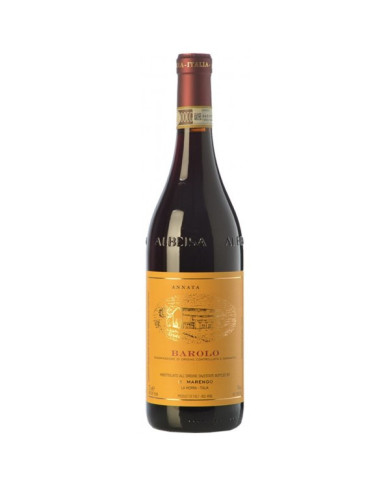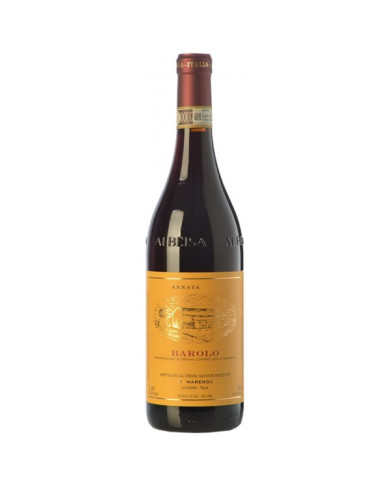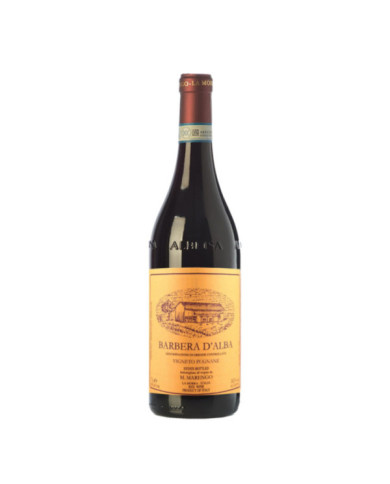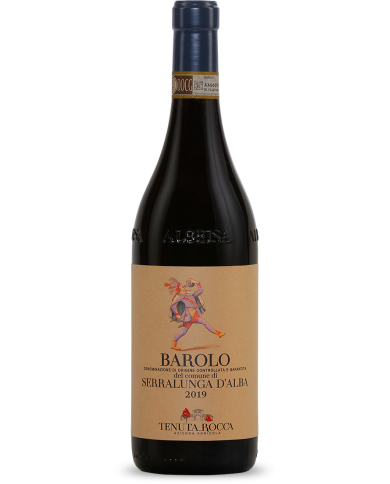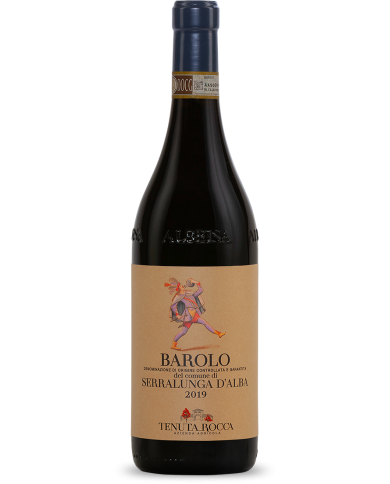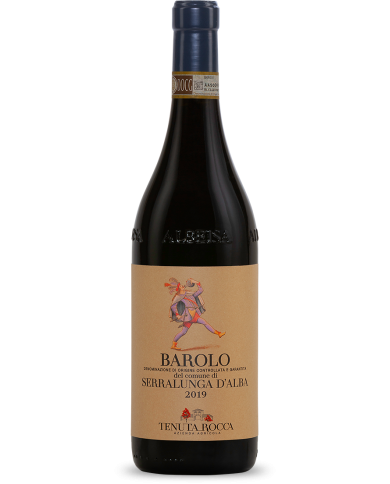The grapes come from a plot of about one hectare located in the municipality of Nizza Monferrato, whose vines reach an average age of 50 years and represent the maximum selection of Barbera. Wine indicated for main courses of red meat, game or well-aged cheeses, structured, round with a harmonious balance between freshness and softness. The grapes are harvested manually and carefully stored in boxes for transport to the cellar, pressed and fermented at a controlled temperature with a maceration of about 15 days. After racking, the wine ages in small wooden barrels for about 18-24 months. The wine is then left to rest for about 6 months in a steel tank. At this point it is possible to proceed with the bottling. After further refinement in the bottle for at least 6 months in the cellar at a temperature of 20┬░C,
Enveloping, warm and round taste. Excellent persistence and harmony, the result of an elegant balance from a decisive freshness to a good body. The grapes are harvested manually in the vineyard and are carefully placed in boxes for transport to the cellar, pressed and then fermented at a controlled temperature with a maceration of about 15 days. After racking, it is aged in small wooden barrels for 18-24 months. The wine is then left to rest for about 6 months in stainless steel vats. At this point it can be bottled. After further aging in the bottle for at least 6 months in the cellar at a temperature of 20┬░C, the wine is finally ready to drink.
SPARKLING WINE OBTAINED WITH THE CLASSIC METHOD. REFERMENTATION TAKES PLACE IN THE BOTTLE FOR APPROXIMATELY 30 DAYS AT A TEMPERATURE OF 13┬░C, AFTER WHICH THE WINE AGES FOR 30 TO 40 MONTHS ON LEES OF YEAST. COMPLETELY MANUAL WORKING. STARTERS AND CAKES, BUT IT'S ALSO EXCELLENT FOR ALL MEALS.
Giulia Negri 's Tartufaia is an elegant and full-bodied red wine produced from Pinot Noir grapes, aged for about 12 months in barrique: the apotheosis of Pinot Noir in the Langhe. It has an aromatic profile that at times recalls Burgundy, with elegant notes of red fruits, flowers and leather. The sip is enveloping, soft and complex, with great character and long persistence.
Il Barolo ha origini antiche. Esistono documenti che testimoniano la coltivazione del Nebbiolo nella zona delle Visette gi├Ā a partire dal XII secolo. Lo stesso nome ŌĆ£VisetteŌĆØ deriva dallŌĆÖespressione dialettale ŌĆ£visŌĆØ(vite) e significa piccole viti. Ottenuto da uve Nebbiolo situate nel comune di Monforte dŌĆÖAlba, zona Visette (Bussia).
Questo vino rosso si presenta con un elegante colore rubino che sfuma verso il granato, promettendo complessit├Ā e profondit├Ā. Al naso, sprigiona un bouquet raffinato e floreale, con delicate note di ibisco rosso che si intrecciano a sentori di prugna matura e lampone fresco. Al palato, conquista con la sua struttura armoniosa e avvolgente, offrendo un'esperienza piena e bilanciata. I tannini, moderati e ben integrati, accompagnano con eleganza ogni sorso, rendendo il vino gi├Ā godibile fin da giovane. Il finale ├© lungo e persistente, lasciando un piacevole ricordo fruttato e vellutato.
Questo vino rosso si presenta con un elegante colore rubino che sfuma verso il granato, promettendo complessit├Ā e profondit├Ā. Al naso, sprigiona un bouquet raffinato e floreale, con delicate note di ibisco rosso che si intrecciano a sentori di prugna matura e lampone fresco. Al palato, conquista con la sua struttura armoniosa e avvolgente, offrendo un'esperienza piena e bilanciata. I tannini, moderati e ben integrati, accompagnano con eleganza ogni sorso, rendendo il vino gi├Ā godibile fin da giovane. Il finale ├© lungo e persistente, lasciando un piacevole ricordo fruttato e vellutato.
Questo vino rosso si presenta con un elegante colore rubino che sfuma verso il granato, promettendo complessit├Ā e profondit├Ā. Al naso, sprigiona un bouquet raffinato e floreale, con delicate note di ibisco rosso che si intrecciano a sentori di prugna matura e lampone fresco. Al palato, conquista con la sua struttura armoniosa e avvolgente, offrendo un'esperienza piena e bilanciata. I tannini, moderati e ben integrati, accompagnano con eleganza ogni sorso, rendendo il vino gi├Ā godibile fin da giovane. Il finale ├© lungo e persistente, lasciando un piacevole ricordo fruttato e vellutato.
Classe e spontanea vivacit├Ā sono le caratteristiche che distinguono il Nebbiolo. Vino antico e gi├Ā noto per le cantine di Casa Reale Savoia a partire dal 1600. ŌĆØ Sbardaj├Ā ŌĆØ ├© un termine che deriva dal dialetto Piemontese e significa ŌĆØ sparsi ŌĆō sparpagliati ed ├© stato scelto questo nome poich├® il vino ├© ottenuto da uve Nebbiolo provenienti da vigneti sparsi tra Langhe e Roero (Monforte, Monteu Roero e Priocca)
Ottenuto da uve Barbera prodotte nei vigneti situati in Monforte dŌĆÖAlba, zona Visette. Il nome La Lisi deriva da "Lisirun", il vecchio cascinale dove la nostra famiglia ha mosso i primi passi nel mondo della viticoltura.
Wine of great nobility, austere, elegant, frank, obtained from Nebbiolo grapes from vineyards owned by the prestigious cru Rabaja in Barbaresco.
Wine of great nobility, austere, elegant, frank, obtained from Nebbiolo grapes from vineyards owned by the prestigious cru Rabaja in Barbaresco.
Elegant, austere, of great nobility; this wine made from Nebbiolo grapes has a garnet red color with orange reflections. In the glass it releases ethereal and spicy aromas, with light notes of vanilla and dried flowers, while in the mouth it is generous, of great harmony and persistence. It goes well with red meats, game and aged cheeses. Obtained from Nebbiolo grapes from vineyards in the Basarin sub-area in Neive.
Elegant, austere, of great nobility; this wine made from Nebbiolo grapes has a garnet red color with orange reflections. In the glass it releases ethereal and spicy aromas, with light notes of vanilla and dried flowers, while in the mouth it is generous, of great harmony and persistence. It goes well with red meats, game and aged cheeses. Obtained from Nebbiolo grapes from vineyards in the Basarin sub-area in Neive.
This version of Barbaresco Bera takes its name from the Serraboella hill, located in the Municipality of Neive, particularly suited to the production of noble, elegant, long-lived wines. It has a bright ruby color with orange hues, the flavor is robust and full, with spicy sensations. An excellent Barbaresco, complete and characteristic, which lends itself to accompany important dishes based on meat and game. Thanks to its longevity, it can also become a collector's item, which will be able to give us strong emotions even after twenty-five years!
Produced with Nebbiolo grapes, it is a garnet colored wine with orange reflections, lively and captivating. It has ethereal, ample and persistent aromas, reminiscent of violets and roses, a dry taste, with a good structure, pleasantly sapid, with already sweet tannins. It goes well with grilled red meats, baked pasta, medium-aged cheeses.
Produced from pomace obtained exclusively from Cortese grapes. Steam distilled in copper stills and continuous system. Alcohol content 40% vol.
Born in 2001 from the Monte Colombo vineyard in Cassine, it is produced only in the best annate.Vino with an imposing and harmonious structure, with notes of raspberry and ripe cherry. Excellent in combination with first courses and red meats with tasty seasonings. Ideal with medium-aged cheeses.
The Chardonnay of the Marchesi di Gresy is a white with great structure, a Piedmontese expression of a classic Burgundian. The grapes are grown on Monte Aribaudo near Treiso and then the must ages for a long period in wood, a full 22 months, an aspect that gives body, softness and tertiary notes of spices and toasting. Peculiar the pleasant sapidity that accompanies the sip and persists for a long time
Nato nella seconda met├Ā dell'800 per opera di un farmacista di Serralunga d'Alba come rimedio ai malanni stagionali. Il Barolo Chinato divenne nella tradizione piemontese lŌĆÖantidoto principale a tanti piccoli malanni, soprattutto da raffreddamento. Bevuto come vin brul├®, caldo e corroborante, si lodavano le capacit├Ā antipiretiche e digestive.
Il Barolo ha origini antiche. Esistono documenti che testimoniano la coltivazione del Nebbiolo nella zona delle Visette gi├Ā a partire dal XII secolo. Lo stesso nome ŌĆ£VisetteŌĆØ deriva dallŌĆÖespressione dialettale ŌĆ£visŌĆØ(vite) e significa piccole viti. Ottenuto da uve Nebbiolo situate nel comune di Monforte dŌĆÖAlba, zona Visette (Bussia).
Questo vino rosso si presenta con un elegante colore rubino che sfuma verso il granato, promettendo complessit├Ā e profondit├Ā. Al naso, sprigiona un bouquet raffinato e floreale, con delicate note di ibisco rosso che si intrecciano a sentori di prugna matura e lampone fresco. Al palato, conquista con la sua struttura armoniosa e avvolgente, offrendo un'esperienza piena e bilanciata. I tannini, moderati e ben integrati, accompagnano con eleganza ogni sorso, rendendo il vino gi├Ā godibile fin da giovane. Il finale ├© lungo e persistente, lasciando un piacevole ricordo fruttato e vellutato.
Questa ├© la nostra espressione di Barolo ŌĆ£classicoŌĆØ. NellŌĆÖantica tradizione il Barolo veniva prodotto non da un singolo vigneto ma unendo uve provenienti vigneti dislocati in diverse zone e comuni del Barolo. Noi otteniamo questo vino da uve provenienti dei comuni di Monforte, Castiglione Falletto e La Morra.
Classe e spontanea vivacit├Ā sono le caratteristiche che distinguono il Nebbiolo. Vino antico e gi├Ā noto per le cantine di Casa Reale Savoia a partire dal 1600. ŌĆØ Sbardaj├Ā ŌĆØ ├© un termine che deriva dal dialetto Piemontese e significa ŌĆØ sparsi ŌĆō sparpagliati ed ├© stato scelto questo nome poich├® il vino ├© ottenuto da uve Nebbiolo provenienti da vigneti sparsi tra Langhe e Roero (Monforte, Monteu Roero e Priocca)
Ottenuto da uve Barbera prodotte nei vigneti situati in Monforte dŌĆÖAlba, zona Visette. Il nome La Lisi deriva da "Lisirun", il vecchio cascinale dove la nostra famiglia ha mosso i primi passi nel mondo della viticoltura.
excellent both as an aperitif and throughout the meal, it accompanies a wide variety of foods based on both fish and vegetables, up to moderately strong flavours.
Il Barolo Riserva Monfortino 1995 ├© un barolo pronto per essere bevuto, ma anche in grado di rimanere ancora per molti anni nelle vostre cantine.
Un grande classico da una grande vigna, il Barolo di Aldo Conterno proviene infatti da due diversi appezzamenti in Bussia, uno dei vigneti pi├╣ importanti di Monforte dŌĆÖAlba. Da qui, dopo unŌĆÖattenta selezione dei grappoli, le uve vengono portate in cantina per la successiva vinificazione in acciaio dove le bucce rimangono a contatto con il mosto per quasi un mese. Dopo la svinatura ed alcuni travasi il vino viene fatto maturare per oltre due anni in botti grandi di rovere. ├ł cos├¼ che nasce un Barolo di grande riconoscibilit├Ā, austero e profondo.
INTENSE RED COLOR WITH GARNET REFLECTIONS. THE NOSE IS FRUITY AND ELEGANT, WITH AROMAS OF RIPE PLUM AND MARASCA MARASCA AND HINTS OF VIOLET. YOUNG ON THE PALATE, RICH IN PULP, EXCELLENT ACID FRESHNESS. EXCELLENT WITH TASTY FIRST COURSES, RED MEAT AND GAME.
INTENSE RED WINE WITH PURPLE REFLECTIONS, CHARACTERIZED BY A DELICATE BUT INTENSE AROMA, WITH NOTES OF RIPE RED FRUIT. THE FLAVOR IS DRY, WITH A BITTER-ALMOND AFTERTASTE. FULL-BODY, PERSISTENT, WITH ELEGANT STRUCTURE. SUITABLE FOR TASTY FIRST AND SECOND DISHES BASED ON MEAT, MUSHROOMS AND TRUFFLES.
SOFT STRAW YELLOW COLOR WITH GREEN REFLECTIONS. THE NOSE EMERGES NOTES OF PEACH, BANANA AND PEAR. FINE AND PERSISTENT WITH EXCELLENT ACID SHOULDER. FRESH, STRUCTURED AND SOFT ON THE PALATE. RECOMMENDED WITH APPETIZERS, SOUPS AND LIGHT FIRST COURSES, FISH-BASED SECONDS, WHITE MEAT AND FRESH AND AGED CHEESES.
INTENSE STRAW YELLOW COLOUR. NOSE MARKED BY PLEASANTLY BUTTERY NOTES, THEN PEAR, PEACH, MANDARIN AND FLINT. DELICATE BUT AT THE SAME TIME EXTREMELY INTENSE PERFUME. ON THE PALATE IT IS FRESH, POWERFUL, LONG AND PERSISTENT. APPETIZERS, SOUPS AND LIGHT FIRST COURSES, WHITE AND RED MEAT, FISH, FRESH AND MEDIUM-MATURED CHEESES.
VERY INTENSE STRAW YELLOW COLOUR. NOSE MARKED BY HINTS OF FLINTSTONE, VANILLA WITH TOASTED AND DELICATELY SPICY HINTS. IN THE MOUTH IT IS ELEGANT, SOFT AND LONG PERSISTENT WITH A GOOD SHOULDER. APPETIZERS AND LIGHT FIRST COURSES, WHITE MEAT AND FISH SECONDS, FRESH AND AGED CHEESES.
With an enveloping scent and balanced, it is a wine with a bouquet harmonious where each olfactory component does not prevail over the other.
The "Vigna Pelizzane" is a Ghemme of great structure and good complexity, aged for at least 4 years in large barrels. The aromas are intense and mineral and the taste is soft and vibrant, dry and fresh, with vigorous tannins and a long persistence on the finish
Deep straw yellow colour. The aromas, on the nose, unfold on a carpet composed of dried fruit and lightly toasted bread, wild flowers. In the mouth the entrance is full and rich
On the nose the wine is ethereal and floral with the sweet notes of violet typical of the vine; red fruit, plum and spices in the background. The mouth is pleasantly fresh and balanced and the soft and enveloping tannins make it an elegant but not too austere drinkable wine.
Intense purplish ruby red color with violet reflections. Intense nose of red fruits (raspberry and black cherry) and fine spices. In the mouth the marked but sweet acidity makes it round and full; in closing notes of toasted hazelnut.
One of a Kind Chardonnay. It is dedicated to the owner's grandfather, from whom the adventure of the Bovio family in the world of wine began. Born In 1998 From An Experiment, It Is Appreciated To Such A Point That Since Then It Has Been Considered A "Chicca" Of The Cellar.
Il Barolo di Bartolo Mascarello ├© un monumento enologico del Piemonte, un indiscutibile punto di riferimento. Si tratta di un Barolo tradizionale di altissimo livello, maturato per 32 mesi in botte grande, dal fascino antico e dalla personalit├Ā ricca, robusta, intensa e complessa, in grado di incarnare magistralmente la memoria storica del territorio
Forteto della Luja Loazzolo is a fragrant and enveloping wine, with a deep yellow color with apricot and gold reflections. The olfactory profile reveals a rich, ripe fruit, with a prevalence of apricot notes. The "muscat" root of the fruit is evident, which a balsamic wood enriches with spicy and roasted notes. Rich and creamy on the palate, to which it unfolds in all its multifaceted sweetness and alcohol, with interesting returns of fruit, chocolate and honey. A very pleasant wine, which ends long, with an echo of vanilla and white chocolate. Constitutionally long-lived, it maintains an enviable gustatory balance for many years. Excellent meditation wine, it goes well with aged cheeses and desserts.
Forteto Pian dei Sogni Piemonte Brachetto Passito DOC is cherry red in colour. A wine with pleasant garnet reflections. Pian dei Sogni is produced in a hilly area at an altitude of over 400 meters slm It is made with the Guyot system according to traditional methods and by hand. This excellence comes from dried Bracchetto grapes. A Brachetto Passito Doc that stands out in terms of particular aromas and scents. Discover the hints of dried rose, strawberry jam, cherries in syrup and spices. Then savor it with hazelnut, walnut, almond, chocolate or chestnut cakes.
Piasa Rischei is the wine produced solely with Moscato grapes, left to dry on the vine and harvested at the end of October, a part of the bunches is still left to dry on mats in an orchard. After fermentation, the wine is aged in barriques for 24 months. A passito balanced between freshness and sweetness. Great evolutionary capacity. Perfect to combine with cheeses and fois gras.
Giulia Negri 's Barbera D'Alba is a modern interpretation of Barbera, thanks to the mineral-rich soils of the La Morra cru. The grapes are harvested in small boxes and rigorously by hand. The grapes are pressed and left to ferment spontaneously in steel vats, then the wine ages for about 16 months partly in steel and in French oak tonneaux. On the nose the small red fruits and leather are the most present scents, in the mouth the sip is frank and dry.
Quando si parla di Bartolo Mascarello, si parla di uno dei miti delle Langhe piemontesi, capace di realizzare Baroli tradizionali di livello eccelso.
Il Barolo Francia di Giacomo Conterno prende nome dallŌĆÖomonimo vigneto sito in Serralunga dŌĆÖAlba, acquistato dall'azienda nel 1974.
Questo vino bianco nasce dallŌĆÖutilizzo in purezza di un grande vitigno internazionale, il Sauvignon.
The Fiat Chardonnay bottle can be a great gift idea for car enthusiasts. Wines with an automotive design produced in limited numbers by the eccentric Piedmontese producer Pier Giorgio Scrimaglio. The Scrimaglio family has been in Piedmont since the 17th century and comes from France, where it bore the name Escrimeaux (swordsman). In Monferrato, it gave its name to an area that is still called Region Scrimaglio, where the farm and vineyards are now located. Francesco Scrimaglio, the progenitor of the family, started his wine-growing business in the early 1900s, which was later expanded by his son Pietro and grandsons Franco and Mario.
Barbaresco "Albesani" from the Massolino winery is a typically Piedmontese red wine of great elegance and quality, perfect for important occasions. It is made with hand-selected pure Nebbiolo grapes and aged for 18 months in Slavonian oak barrels. The ruby red color with garnet reflections accompanies aromas of red fruits, hay and tobacco. The sip is full, harmonious, elegant, soft and long
Vinificazione Il Barolo Chinato ├© un vino speciale prodotto con Barolo a Denominazione d'Origine Controllata e Garantita, aromatizzato con corteccia di china calissaja, radice di rabarbaro e di genziana e il prezioso seme di cardamomo, i cui principi attivi vengono estratti con una lenta macerazione a temperatura ambiente seguita da un affinamento in botte per quasi un anno. Servito a temperatura ambiente come elegante fine pasto oppure riscaldato a vapore con una scorza di arancia.
Grape variety: 100% CANELLI WHITE MOSCATO
Altitude: 360 meters slm level Slope: 32% with South West exposure
Training system: Low Guyot
Soil: 45% tuffaceous - 48% sandstone - 7% calcium ŌĆŹ
Average yield per hectare: 65 hl.
We are at Morra, Serradenari, on soils from the Messinian period with a sandy loam texture with a strong presence of calcareous marl. At about 480m with a south-west exposure, the pure Nebbiolo grapes are vinified with spontaneous fermentation in truncated cone-shaped vats, macerating for about 40 days. The wine then ages for 30 months in 25-hectolitre Slavonian oak barrels.
Giulia Negri 's Barolo "La Tartufaia" is the producer's personal vision of the "La Morra" area who skilfully transforms the Nebbiolo grapes into an important and elegant red wine, with a deep and fine taste. On the nose the aromas are of red fruit, berries with notes of tobacco and licorice. On the palate it is full-bodied, enveloping with silky tannins and earthy and bloody sensations that close the sip.
Giulia Negri 's "Pian delle Mole" is an intense red wine that gives a bouquet full of aromas ranging from red fruits when young, but which also lends itself to aging, then tending towards more tertiary aromas such as spice and coffee . On the palate it is warm, soft and persistent.
This wine represents the best production of Meirana. It is obtained from the grapes of old vineyards planted in the years 1953 and 1955. The average yield of the vineyards in the various harvests is from 30 to 40 quintals per hectare. The grapes are harvested in wooden boxes and transferred directly to the presses so that the bunches arrive intact. These, due to their rich structure and acidity, make it possible to obtain a great wine suitable for storage, maintaining its aromas and freshness over the years. The name Bruno Broglia is in honor of the founder of the farm. This selection, recognized as one of the reference white wines, gets important national and international awards every year. It was also served as the only white wine at the Gala dinner, for the G20 in St. Petersburg, in the presence of the greats of the Earth, held on 5 September 2013. Bruno Broglia has a straw yellow color with greenish reflections, brilliant: the bouquet very persistent finish, fruity and reminiscent of the aristocratic scent of the grapes from which it comes. It goes well with both fish-based dishes and shellfish where it brings out the characteristics of haute cuisine better.
Barolo Massolino represents the synthesis of the different characteristics that each terroir offers. The company has always favored the traditional aging in large Slavonian oak barrels to maintain a purer and more pure identity. Wide and variable range of perfumes, surprising expressive evolution over time.
Barolo DOCG is a wine produced in the Massolino cellar of Sarralunga d'Alba. The company boasts a family tradition now in its fourth generation and has always aimed to create bottles capable of expressing all the beauty of a unique territory with quality. The grapes come from the Nebbiolo vines, classics in this area rich in limestone and with a temperate climate, which favor its optimal cultivation. After the careful harvest, we proceed with the long-lasting maceration and fermentation which takes place in oak vats. Subsequently, it is aged for about 30 months in large Slavonian oak barrels. Before being put on the market, the wine needs a further period of aging in the bottle, in very dark and cool rooms, in order to obtain greater expressiveness. Barolo DOCG is a full-bodied and structured wine, which is well suited for immediate drinking, but can evolve in the cellar for several years.
Simply the Barolo di Serralunga at the peak of its potential. Barolo DOCG Vigna Rionda Riserva is the wine we are most proud of.
Massolino's Barolo "Parafada" comes from vines that are more than 50 years old from the Parafada di Serralunga cru and ages for 30 months in cask. The bouquet is floral, spicy, deep and very elegant. On the palate it is warm and soft, very harmonious and balanced, with a very long persistence
Barolo DOCG is a wine produced in the Massolino cellar of Sarralunga d'Alba. The company boasts a family tradition now in its fourth generation and has always aimed to create bottles capable of expressing all the beauty of a unique territory with quality. The grapes come from the Nebbiolo vines, classics in this area rich in limestone and with a temperate climate, which favor its optimal cultivation. After the careful harvest, we proceed with the long-lasting maceration and fermentation which takes place in oak vats. Subsequently, it is aged for about 30 months in large Slavonian oak barrels. Before being put on the market, the wine needs a further period of aging in the bottle, in very dark and cool rooms, in order to obtain greater expressiveness. Barolo DOCG is a full-bodied and structured wine, which is well suited for immediate drinking, but can evolve in the cellar for several years.
Mario Marengo's Dolcetto d'Alba is a faithful portrait of pure Piedmontese everyday life, directly from the Langhe. Made as tradition dictates by an authentic vigneron, it is vinified only in steel vats. On the nose it smells of violets and wild flowers with garnishes of peeled almonds and light spices. Fresh and agile sip, gastronomic and territorial with a finish of dried fruit
The Barolo "Bricco delle Viole" by Mario Marengo is an artistic and at the same time deeply territorial interpretation of this well-known Barolo cru. A Piedmontese red of great personality and expressiveness, characterized on the nose by the legendary aroma of violet with accents of sour cherry, black pepper, liquorice and plum. In the mouth it is juicy, tasty, with silky tannins and a long tasting persistence
After the careful manual harvest, only the best bunches are sent for fermentation in steel containers, with maceration on the skins for a period of 10 days. Subsequently, we proceed with the refinement which takes place in barriques and lasts 24 months.
Mario Marengo's Barbera d'Alba "Vigna Pugnane" is a concentrate of pure Piedmontese territoriality. The Barbera grapes come from the municipality of Castiglione Falletto and give life to a red rich in floral and fruity aromas, intense and engaging. After aging in wood for at least 10 months, it becomes full of body and heat, giving a juicy sip, with a typical acid shoulder and a long fruity persistence.
Discover the magic of Piedmont wines: savor the taste of tradition!
Piedmont is one of the best known Italian regions for the production of excellent wines. Piedmont's winemaking tradition has developed over the centuries and the wines produced in the region are appreciated all over the world.
The origins of Piedmont wine
Piedmont wine has ancient origins. The region, located in the north-western part of Italy, has a temperate climate which lends itself to the production of quality wines. The first documents referring to the wines of Piedmont date back to the Middle Ages, when the princes of the region invited their guests to taste their wines.
Piedmont wine styles
Piedmont wine styles are very diverse. The best known wines are the red wines Barolo and Barbaresco, both based on Nebbiolo, a vine native to the region. Red wines from Piedmont are generally more full-bodied, with complex aromas ranging from berries to spices, and have good acidity which makes them suitable for ageing.
Besides red wines, Piedmont is also famous for its white wines, such as Gavi and Arneis . These wines are lighter and have less tannins than red wines, but are just as tasty.
What are the most famous Piedmontese wines?
The wines of Piedmont are appreciated all over the world and are considered among the best wines of Italy. Among the best known are Barolo, Barbaresco, Gavi, Arneis , Dolcetto and Barbera. These wines have been enjoyed by generations of wine lovers and are a must for anyone who wants to discover the winemaking tradition of Piedmont.
How to best savor the wines of Piedmont
The wines of Piedmont are wines to be tasted slowly. The tasting must be done in a quiet environment and with the use of glass glasses suitable for wine tasting. The serving temperature is essential to get the most out of the wine: white wines should be served cold (8-10┬║C) while red wines should be served at a higher temperature (16-18┬║C).
To better appreciate the wines of Piedmont, it is important to know the flavors and aromas of each wine. You should try to identify the aromas and flavors of each wine, such as berries, spices, herbs and earthy notes. This will help you better understand how wines pair with food and how to choose the most suitable wines for a given occasion.
Taste the tradition with the wines of Piedmont
Tasting the wines of Piedmont is a unique experience. It will let you discover the flavors and aromas of a millenary winemaking tradition that has made Piedmont one of the best-known places in the world for the production of quality wines.
Choose a wine from Piedmont and savor all the magic and taste of tradition!
Denomination Vini del Piemonte: A Journey Into the World of Wine
Piedmont is a region located in northwestern Italy that stretches from the Alps to the Po. This region is famous for its natural beauty, culture, history and, above all, for the production of high quality wines. In this guide, you will discover everything there is to know about the denomination of Piedmont wines, from the grape varieties to the main wines produced and their characteristics.
Introduction to the appellation of Piedmont wines
The denomination of wines of Piedmont is a system of classification of wines based on their origin, the variety of grapes used and the production methods. There are three levels of appellation for the wines of Piedmont: DOCG (Controlled and Guaranteed Designation of Origin), DOC (Controlled Designation of Origin) and IGT (Typical Geographical Indication).
IGT extension
The IGT is the lowest denomination and covers the entire Piedmont region. This appellation allows producers to use grapes from other regions and to experiment with new winemaking techniques. IGT wines can have very different characteristics, depending on the variety of grapes and the techniques used.
DOC
The DOC designation is reserved for wines produced in specific areas of Piedmont and which meet specific production criteria. These wines must be produced with a certain grape variety, they must be aged for a specific period and they must respect specific production criteria.
DOCG
The DOCG denomination is the highest in the hierarchy of the denomination of wines of Piedmont. This appellation is reserved for wines that represent the best of Piedmont and that have an international reputation. DOCG wines are produced in specific areas of Piedmont, using specific grape varieties and following strict production criteria.
The grape varieties of Piedmont
Piedmont is famous for its large variety of native grapes, some of which are used to produce some of the finest wines in the world. Here are some of the most important grape varieties of Piedmont:
Nebbiolo
Nebbiolo is Piedmont's most important grape variety and is used to produce some of the region's most famous wines, such as Barolo and Barbaresco. This grape variety is known for its fruity flavor and tannic character.
Barbera
Barbera is the second most important grape variety in Piedmont and is used to produce highly regarded red wines, such as Barbera d'Alba and Barbera d'Asti.
The main wines of Piedmont
Piedmont is famous for producing some of the finest wines in the world, which are known for their unique flavor and distinctive characteristics. Here are the main wines produced in the region:
Barolo
Barolo is the king of Piedmont wines and is produced with Nebbiolo grapes grown in the hills of the municipality of Barolo. This wine is famous for its fruity and complex flavour, its tannic character and its intense ruby red colour. Barolo is aged in wooden barrels for a minimum of three years and has an alcohol content of approximately 13%.
Barbaresco
Barbaresco is another great red wine from Piedmont produced with Nebbiolo grapes. This wine has a similar flavor to Barolo, but is a little softer and lighter. Barbaresco is aged for at least two years and has an alcohol content of around 13%.
Barbera d'Alba
Barbera d'Alba is a red wine produced with Barbera grapes and cultivated in the Langhe area. This wine has a fruity flavor and an alcohol content of approximately 12.5%. Barbera d'Alba is aged for at least one year in wooden barrels.
Moscato d'Asti
Moscato d'Asti is a sweet white wine produced with white Moscato grapes grown in the Langhe area. This wine has a fruity and fresh taste and is perfect as an aperitif or dessert. Moscato d'Asti has an alcohol content of approximately 5%.
Piedmont is a very important wine region that offers some of the finest wines in the world. The DOCG, DOC and IGT denominations represent a wine classification system that guarantees the quality and origin of the products. Each grape variety has its own distinctive characteristics, which give the wines of Piedmont their unique flavor and distinctive qualities. If you are a wine lover, a visit to the cellars of Piedmont is an experience that you must not miss.
Frequent questions
What are the most important grape varieties in Piedmont?
The most important grape varieties of Piedmont are Nebbiolo, Barbera and white Moscato.
What is the most famous wine of Piedmont?
The most famous wine of Piedmont is Barolo.
What does the DOCG denomination mean?
The DOCG denomination means Denomination of Controlled and Guaranteed Origin and is the highest in the hierarchy of the Piedmont wine denomination.
What are the main wine production areas of Piedmont?
The main areas of production of Piedmontese wines are the Langhe

